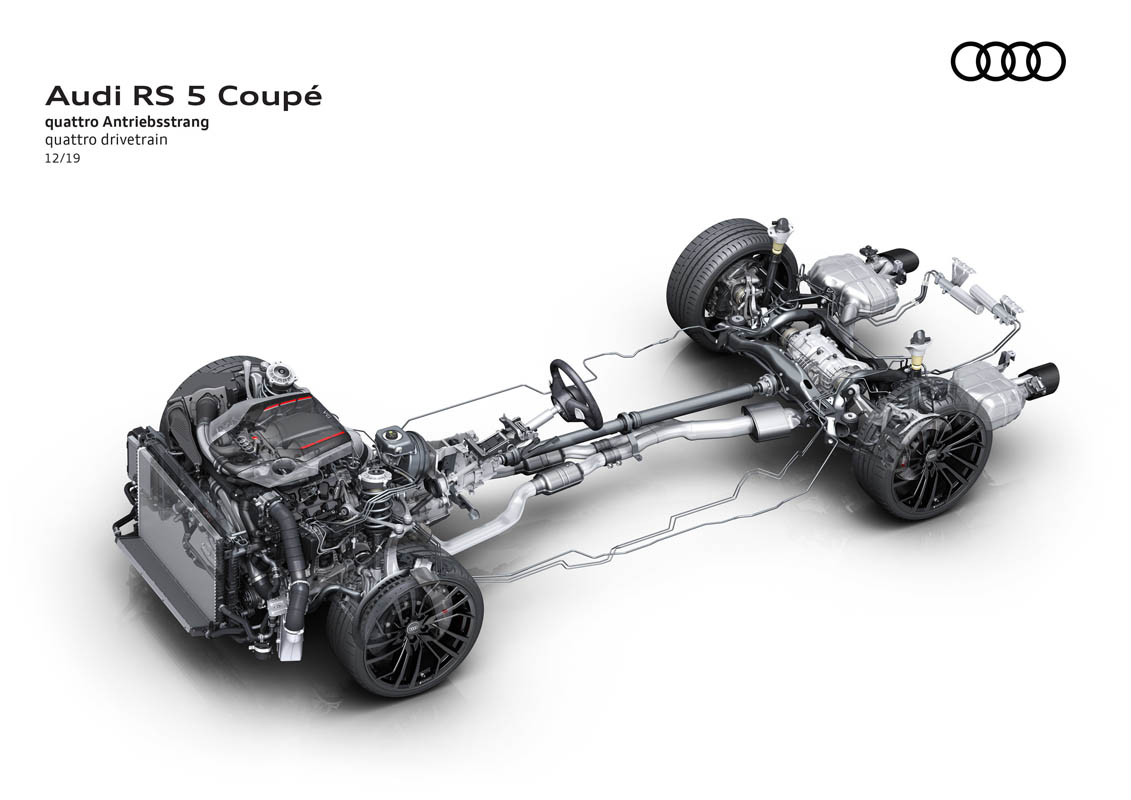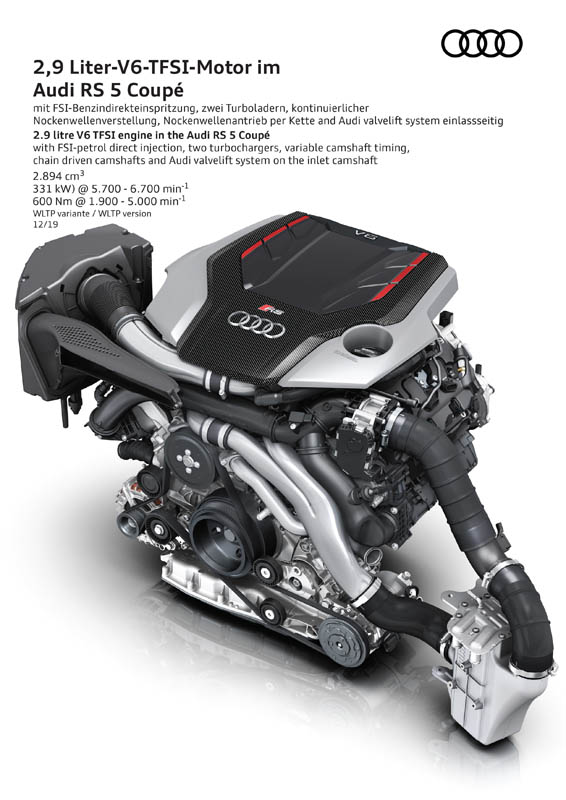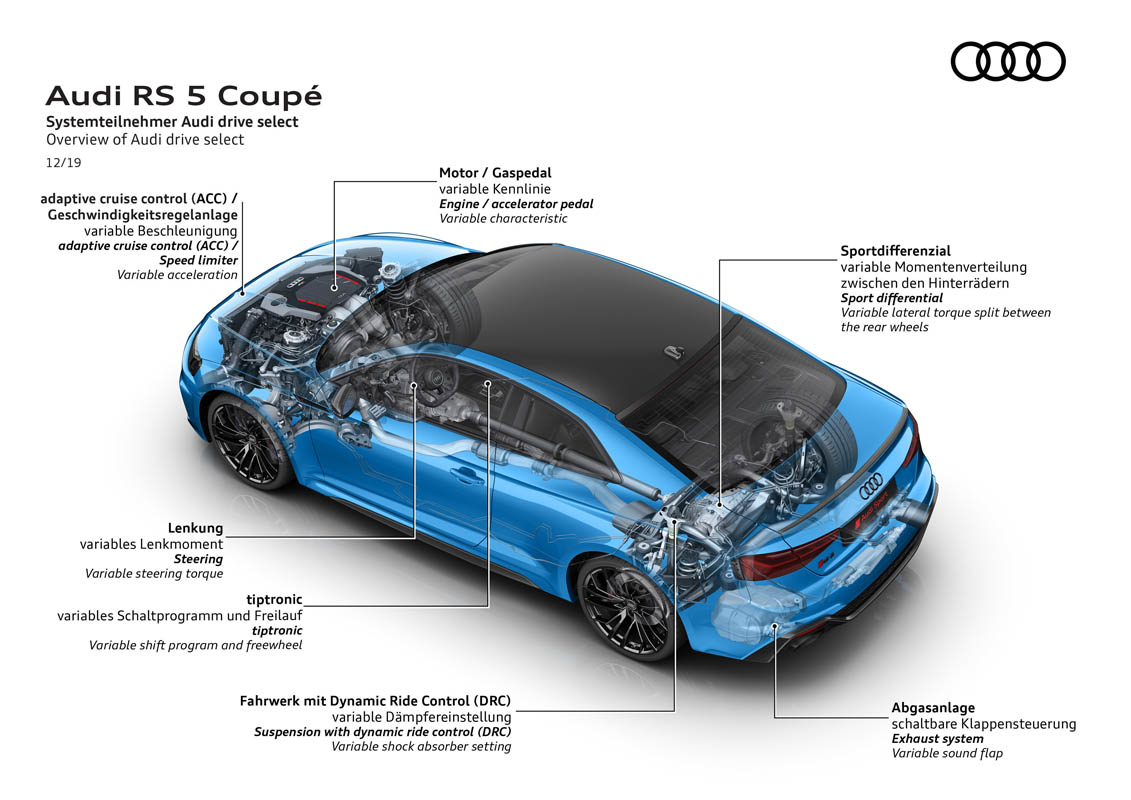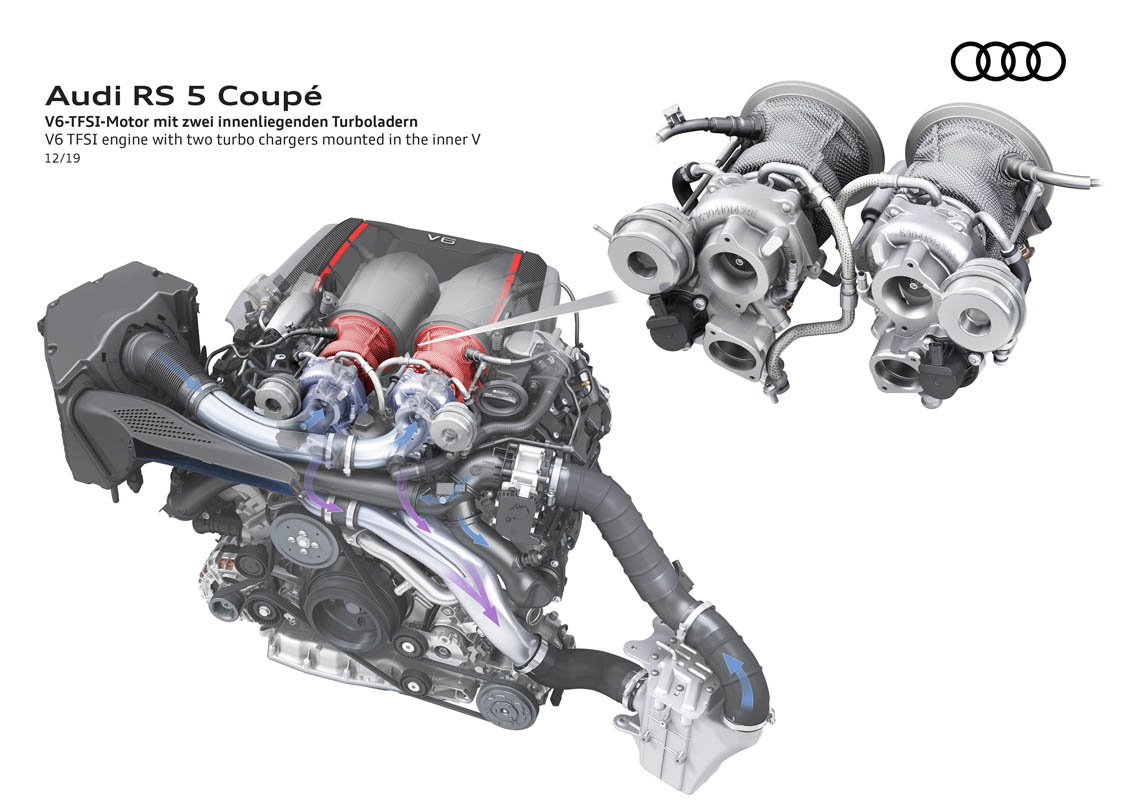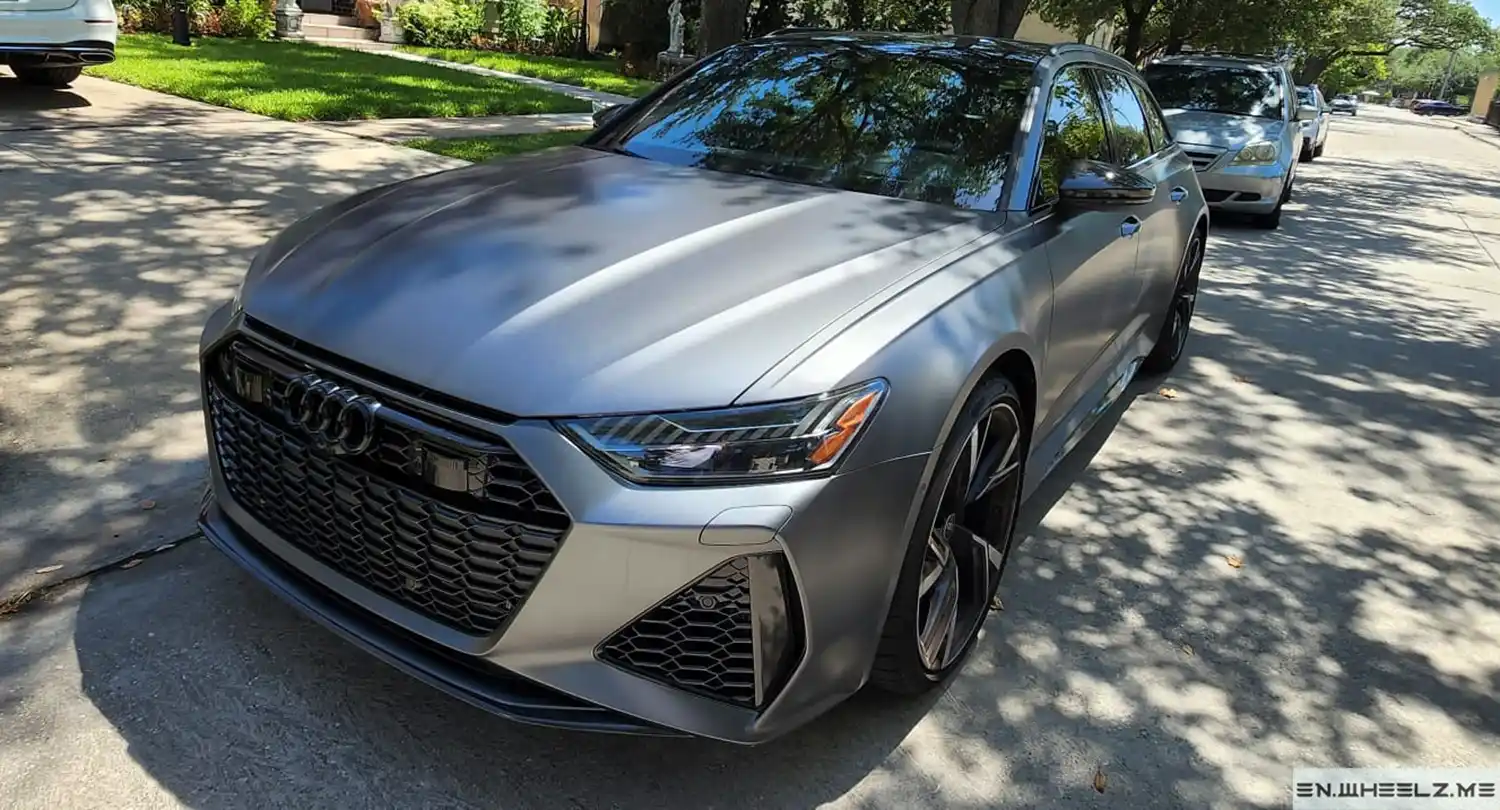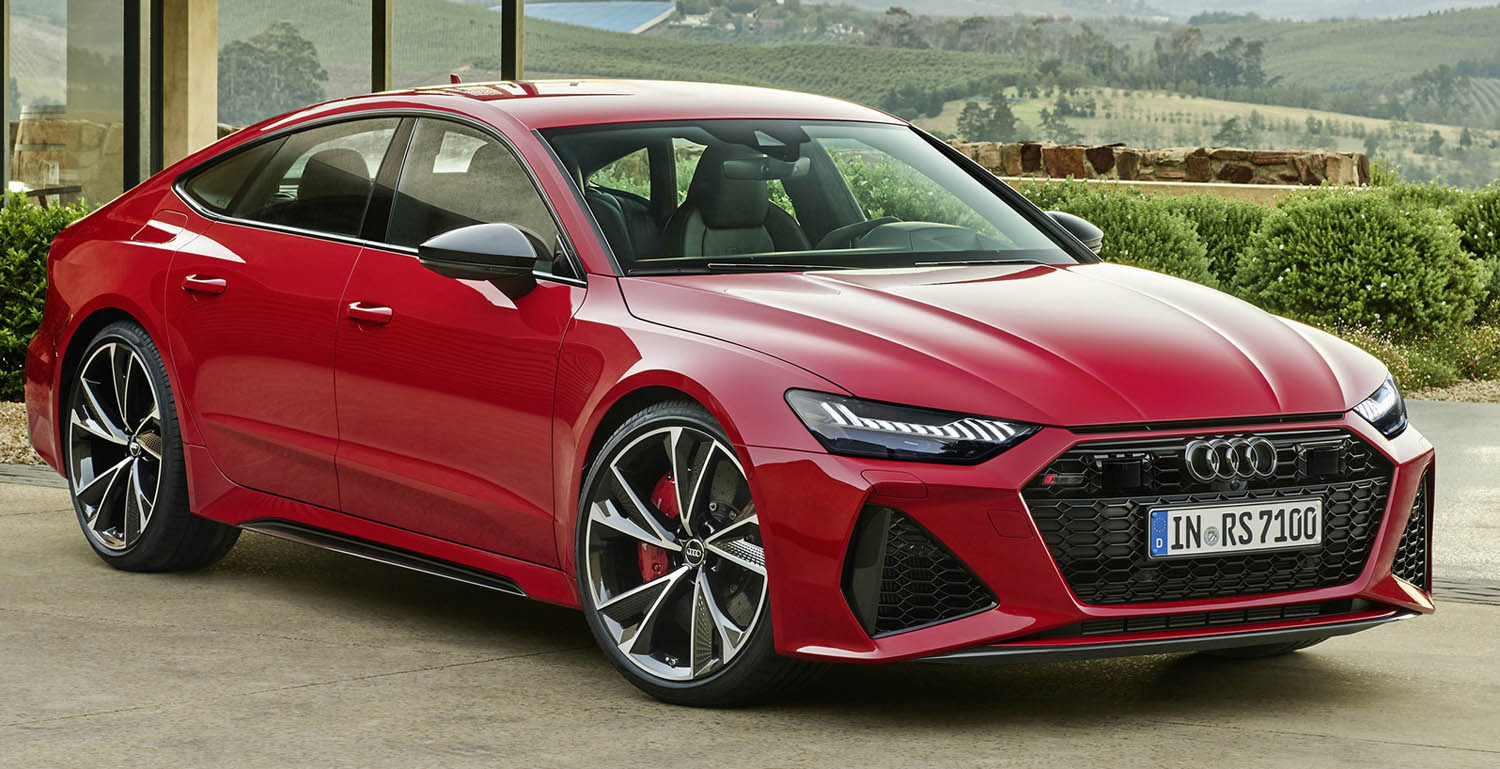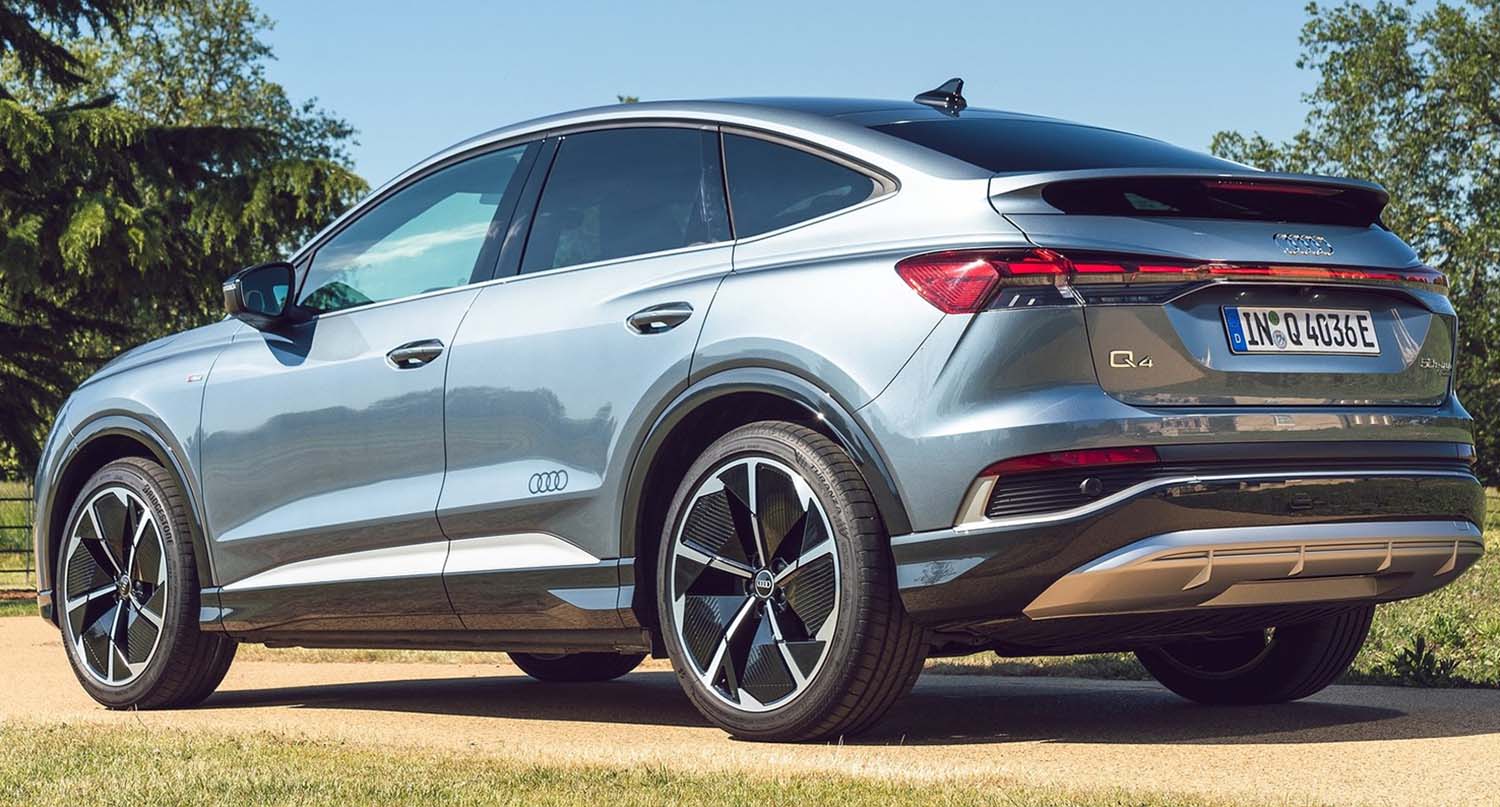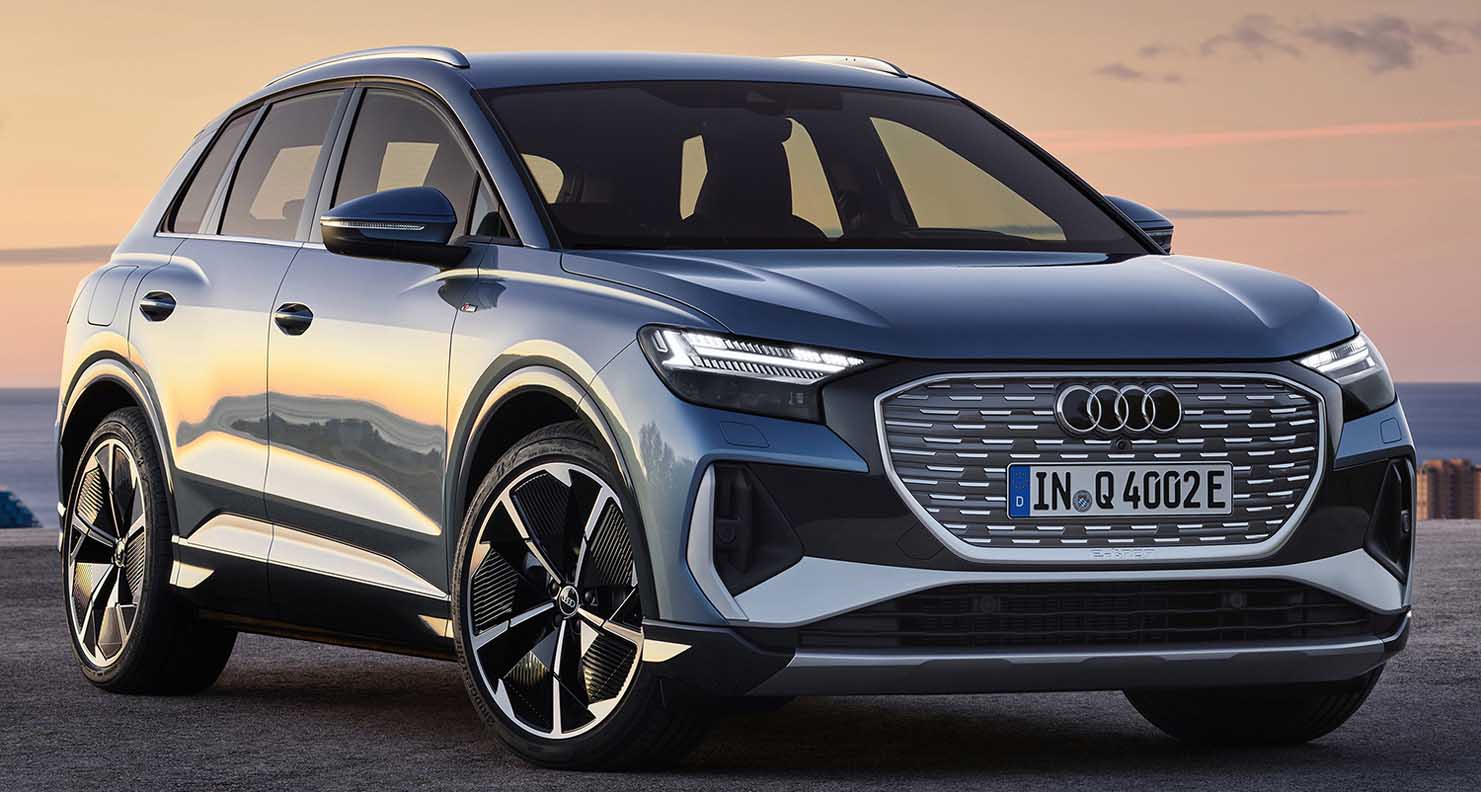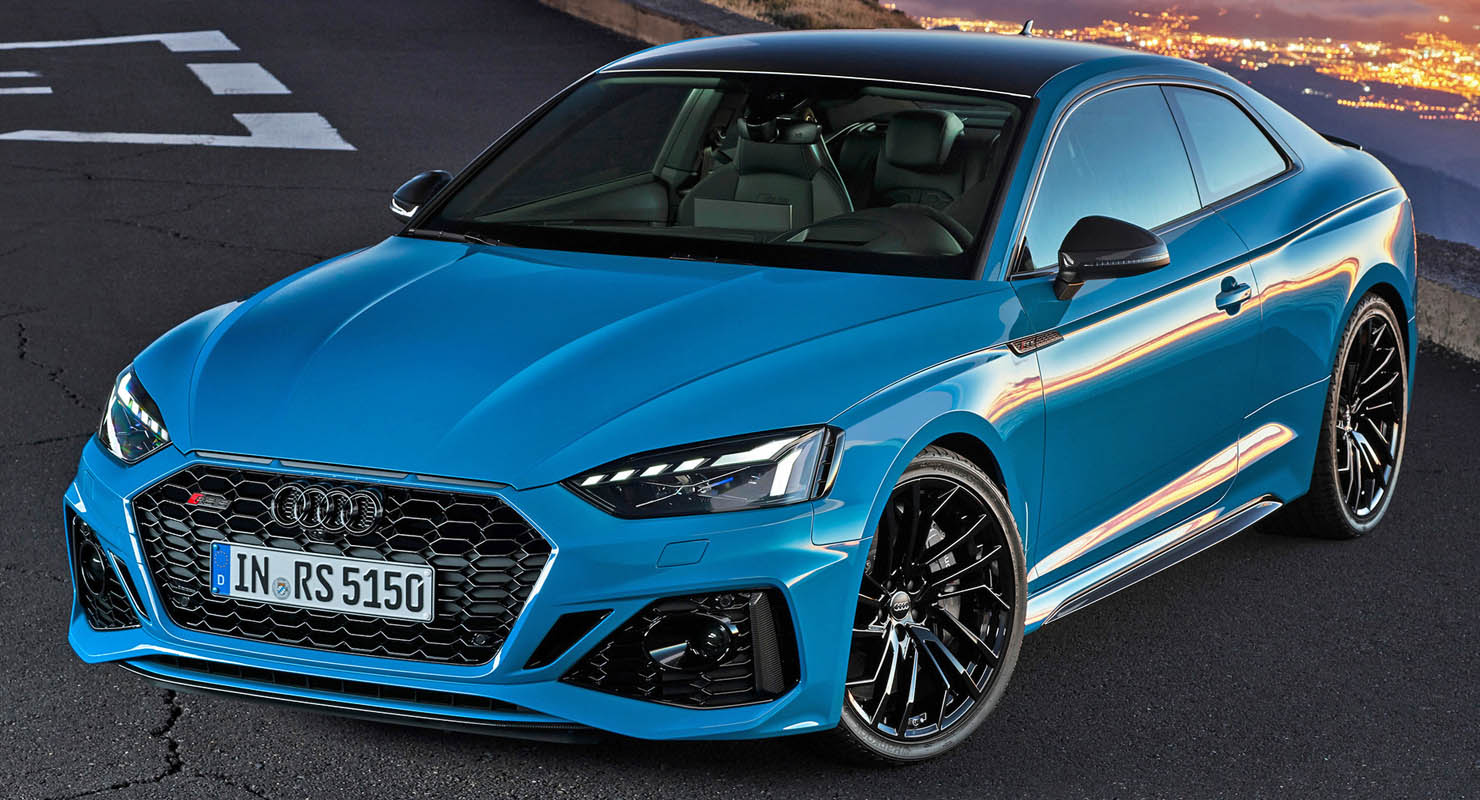
Many design details and a new operating concept: The updated Audi RS5 models, Sportback and Coupé, incorporate the new RS design language of their big brothers, the RS6 Avant and RS7 Sportback. They are operated via the new 10.1-inch central MMI touchscreen. The V6 twin-turbo with 331 kW (450 PS), the quattro permanent all-wheel drive, and the intelligent Dynamic Ride Control suspension technology ensure outstanding driving performance.
“Our RS5 models are highly dynamic all-rounders,” says Oliver Hoffmann, Managing Director of Audi Sport GmbH. “The quattro permanent all-wheel drive grants the RS5 models that decisive extra traction, dynamism, and stability – strengths that Audi put on the road 40 years ago with the first quattro and has continually optimized. The handling is made even more spontaneous with the optional sport differential at the rear axle, which distributes the torque actively between the wheels.”
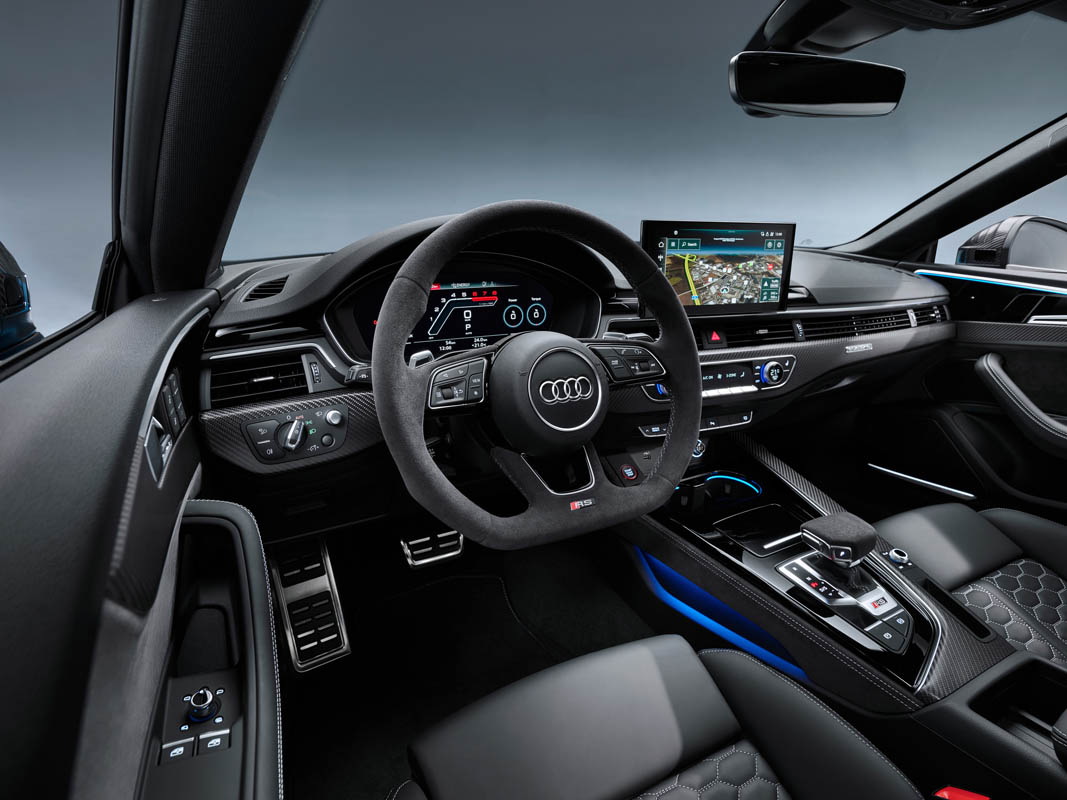
Reduced and functional: the exterior design
The RS5, either as a classic two-door Coupé or as a five-door Sportback, remains true to its genetics and continues the sporty and elegant character also in its revised version. The best example of this is the three-dimensional wave-like shoulder line. Like the original Audi quattro, the RS5 impresses with perfectly balanced proportions: A long engine hood, the extended wheelbase, and the short overhangs underline the sporty presence of the RS5.
The new Singleframe is considerably flatter and wider compared to the Audi A5. The radiator protective grille with the RS-specific three-dimensional honeycomb structure features a gloss black design. The implied air vents above the grille are reminiscent of the classic Audi Sport quattro from 1984. RS-specific darkened Matrix LED headlights with Audi laser light are available as an alternative to the standard Matrix LED headlights. The large, striking side air inlets have a new, pentagonal, geometric cut.
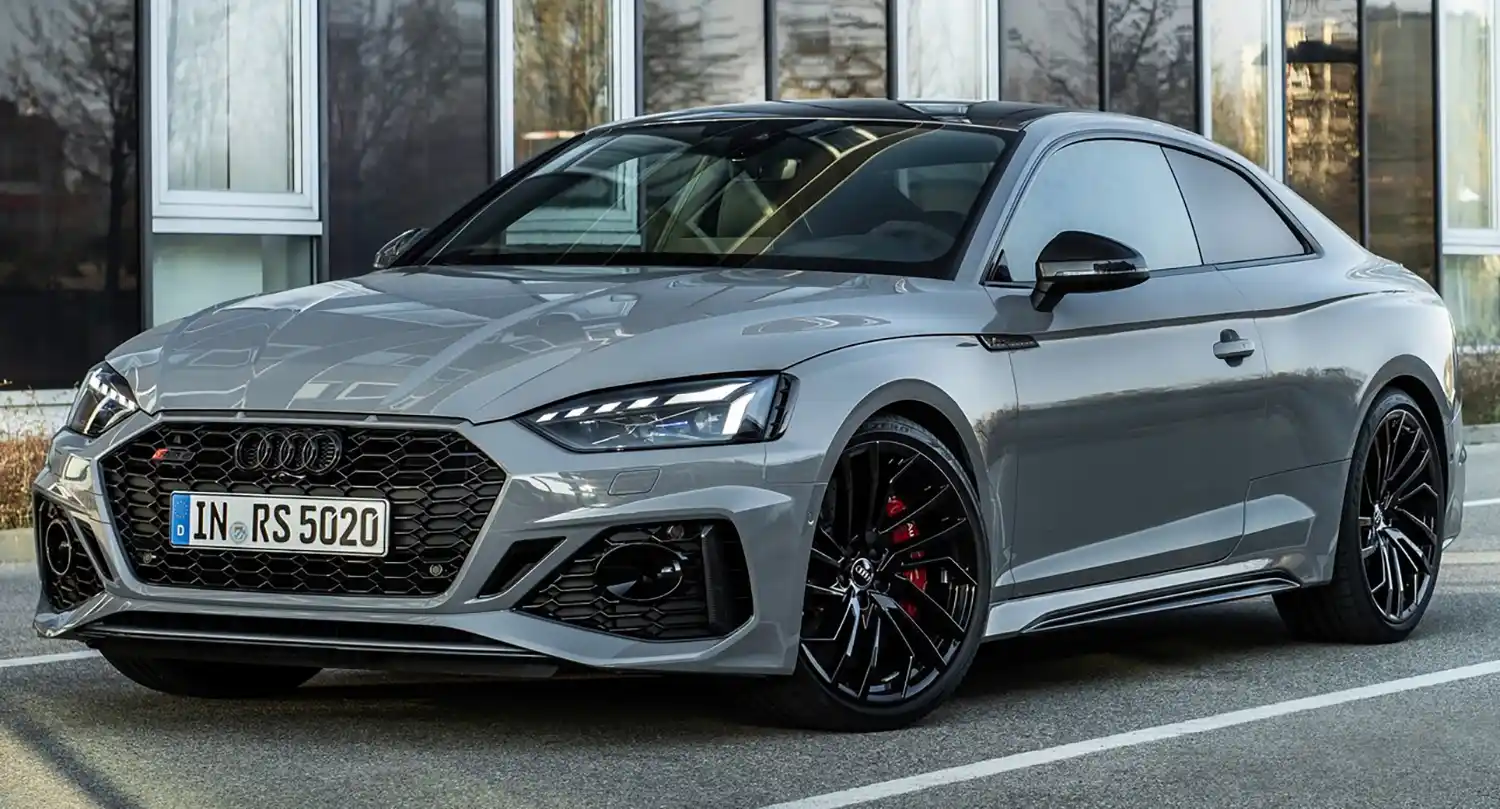
The side view is characterized by the new sill trims. The intensive light-shadow interplay visually makes the RS5 models appear even flatter and deeper. The wheel arches, which are flared by an additional 15 mm (0.6 in) on each side make reference to their quattro genetics. Similar to the RS6 and RS7, the new RS-specific bumper and the diffuser insert grant the RS5 an accentuated rear end. The striking diffuser showcases the RS exhaust system, which, as is typical for the RS, terminates in oval, chrome colored tailpipes on both sides or, in the RS sport exhaust system, terminates in large, black tailpipes. A surface-mounted spoiler lip in black, or optionally in carbon, rounds out the rear.
The gloss black, matt aluminum, and carbon styling packages give many add-on parts an even more individual look. The solid turbo blue and tango red, metallic colors return to the color palette.
Individual and high-quality: the interior
Horizontal lines and the new RS design package in black with rock gray contrasting seams dominate the interior of the RS5 models. The strongly contoured RS sport seats can be set electrically in many ways; their armrests are embossed with the RS logo. As standard, a mixture of Alcantara and leather with a honeycomb pattern serves as upholstery material; fine Nappa leather is available on request. As a new feature in RS5 models, the inlays are available in carbon matt.
Touch instead of turn: the new operating concept
The future-oriented interior design harmonizes with the new operating concept, which is concentrated on a 10.1-inch MMI touch display. This is based on the new third-generation modular infotainment platform (MIB 3). The large display, which is equipped with acoustic feedback, stands freely in the space and is slightly tilted toward the driver. Its menu structure is simple and intuitive like that of a smartphone. The natural-language voice control understands many formulations from everyday speech.
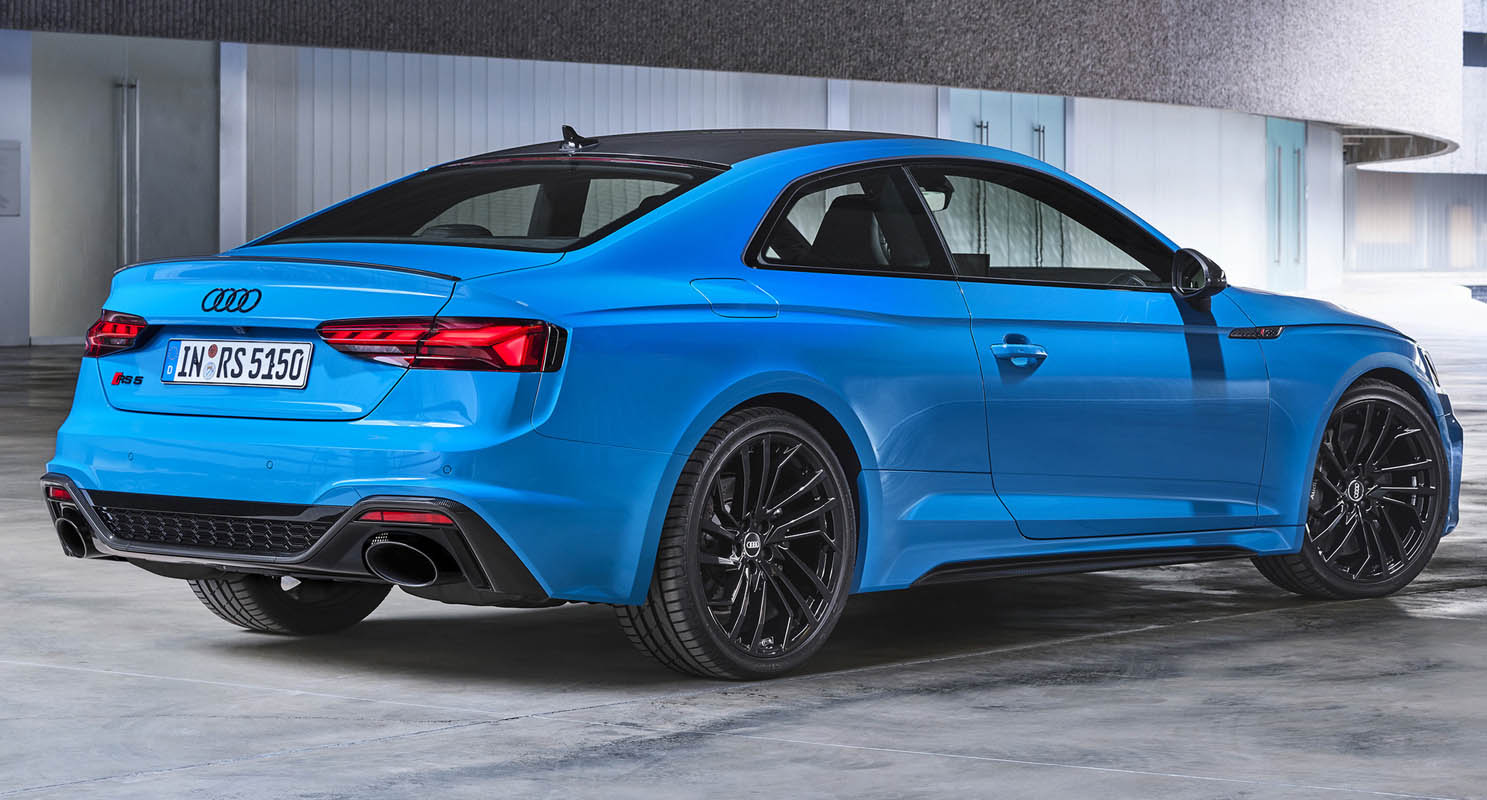
If the top MMI Navigation plus infotainment system is on board, the “RS monitor” view informs the driver about the engine and transmission temperature, the maximum longitudinal and lateral acceleration values, and the tire pressure and temperature in the central MMI display. In the 12.3-inch Audi virtual cockpit, special RS displays concerning tire pressure, torque, output, engine oil temperature, boost pressure, and g-forces can also be shown. Moreover, lap times and acceleration from 0 to 100 km/h (62.1 mph) can be started directly via a button on the steering wheel.
Stunning pulling power: the drive
Immense pulling power and high output combined with efficiency: Even after the revision, the output of the 2.9 TFSI remains unchanged at 331 kW (450 PS). The V6 twin-turbo delivers between 1,900 and 5,000 rpm; during this process, each charger supplies a cylinder bank with compressed air and 600 Nm (442.5 lb-ft) of torque is supplied to the crankshaft. Both RS models catapult themselves from zero to 100 km/h (62.1 mph) in 3.9 seconds; on request, Audi Sport GmbH can raise the top speed from 250 km/h (155.3 mph) to 280 km/h (174.0 mph).
An eight-speed tiptronic that has been tuned for sportiness transmits the forces of the engine; the driver can control it using enlarged aluminum shift paddles. The quattro permanent all-wheel drive gives the RS5 a special place in the segment. In normal driving operation, the power distribution between the front and rear axle is 40:60 – this asymmetrical dynamic torque distribution leads to sporty, rear-biased handling. If necessary, the center differential can redirect up to 70% of the forces toward the front or up to 85% of the forces toward the rear. With the optional sport differential, which actively distributes torques between the wheels of the rear axle, the dynamic handling is increased even further.
In the WLTP driving cycle, the Audi RS5 Coupé consumes just 9.1 l (2.4 US gal) of fuel per 100 km (62.1 mi); the RS5 Sportback consumes 9.2 l (2.4 US gal); the two vehicles thus emit 208 g/km (334.7 g/mi) and 209 g/km (336.4 g/mi) of CO2 respectively.
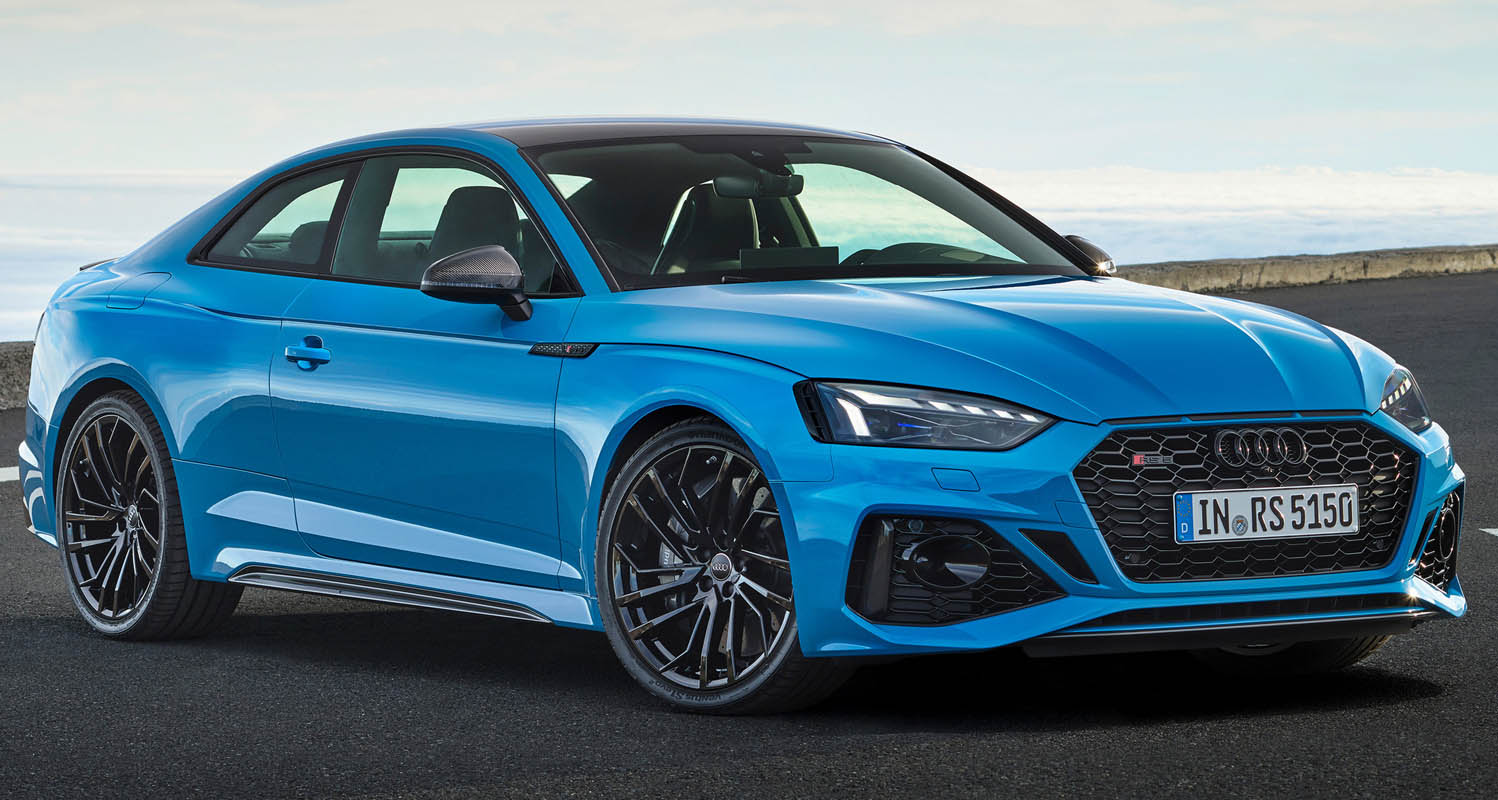
Tuned for sportiness: the suspension
The taut and tuned RS sport suspension forms a perfect partner for the strong drive. The RS sport suspension plus with Dynamic Ride Control (DRC) is available on request. It realizes a purely hydraulic and thus fully instantaneous roll and pitch stabilization; the operation of its dampers can be switched into three stages using the Audi drive select dynamic handling system.
Apart from the familiar comfort, auto, and dynamic drive modes, there are the two new “RS1” and “RS2” modes. These can be individually configured, saved, and then selected directly and quickly via the RS Mode button on the steering wheel. Audi drive select influences the operation of important technical elements, including the engine, tiptronic, steering, and optional components, such as damping, dynamic steering, sport differential, and exhaust flaps.
The Audi RS5 Coupé and the RS5 Sportback drive on 19-inch wheels as standard. 20-inch wheels in three new designs, one version of which is milled and painted in matt bronze, are available on request.
In Germany and other European markets, the RS5 Coupé and RS5 Sportback have been available to order since December 2019; both models will be available at dealerships in spring 2020. The base price for both new models, the RS5 Coupé and RS5 Sportback, starts at EUR 83,500 in Germany.
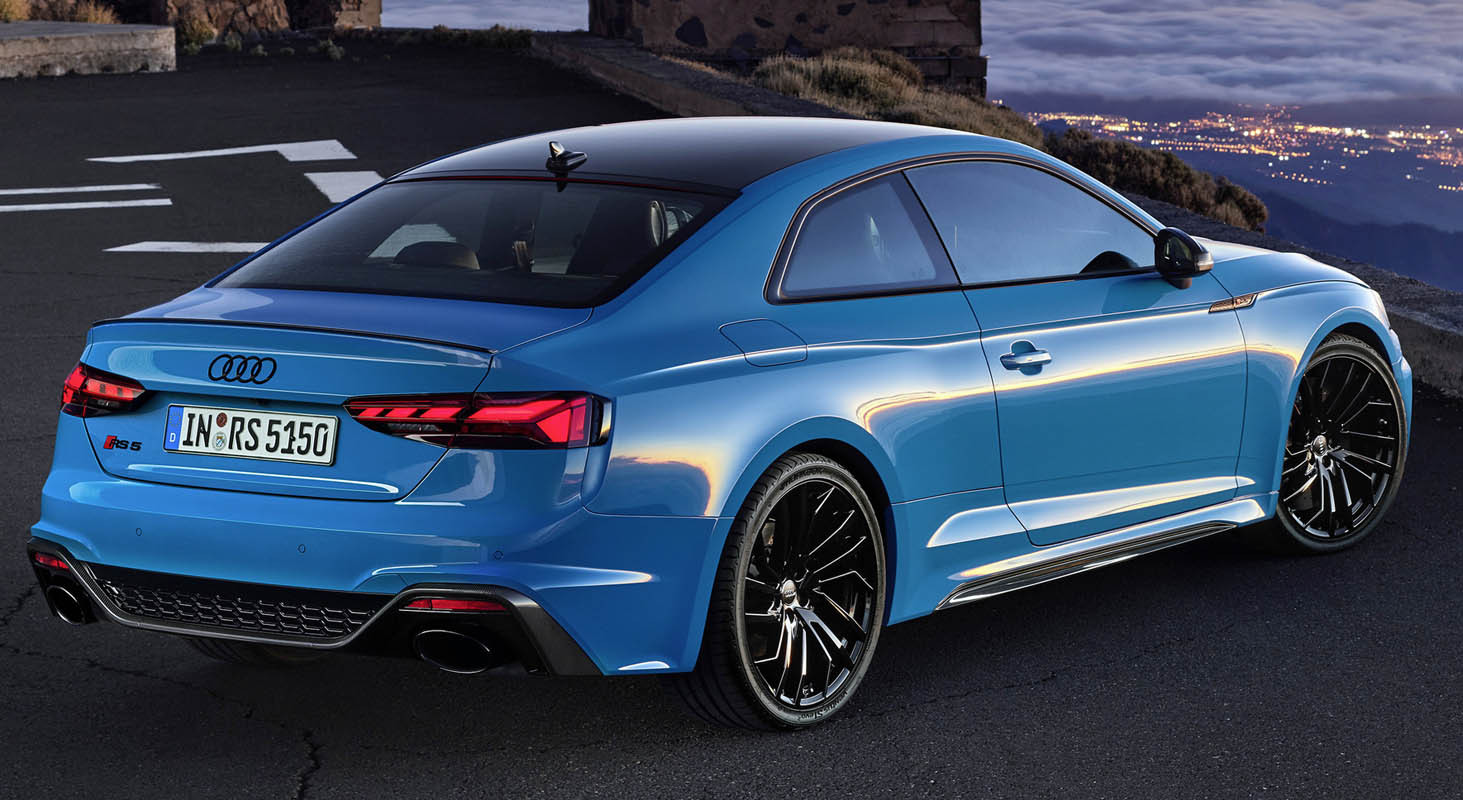
Exterior design
With the revised RS5 models, elegant proportions are combined with details from motorsports. The designers of the RS5 have been inspired by the original quattro from 1980 and the Sport quattro from 1984 in particular. For the revision, the designers have sharpened this character further and designed a few typical characteristic details so that they are even more striking.
The wider and flatter Singleframe dominates the front end. Between the Singleframe and the engine hood, there are implied, flat air vents – reminiscent of the classic Sport quattro from 1984. Its radiator protective grille with the RS-specific three-dimensional honeycomb structure features a gloss black design. The outer air inlets appear as independent, geometric bodies. Their new cut gives them even more presence. Like in the Singleframe, the three-dimensional honeycomb grilles fill the inlets; the left one is closed for optimized aerodynamics in the background and the right one supplies air to both auxiliary water coolers. The air curtain improves the flow of air around the RS5 through the airstream. For this purpose, an air flow is led through the bumper along the wheels in the outer segments of the side honeycomb grilles. Two spoiler lips on the bottom of the front bumper optimize the airflow to the underbody. The result: best drag coefficients with 0.32. The horizontal blade forms a clear finish up to the road surface.
As standard, the RS5 models drive with Matrix LED headlights and dynamic turn signal. For the first time, Matrix LED headlights with Audi Design are available on request. They are showcased in an RS-specific manner when unlocking and locking.
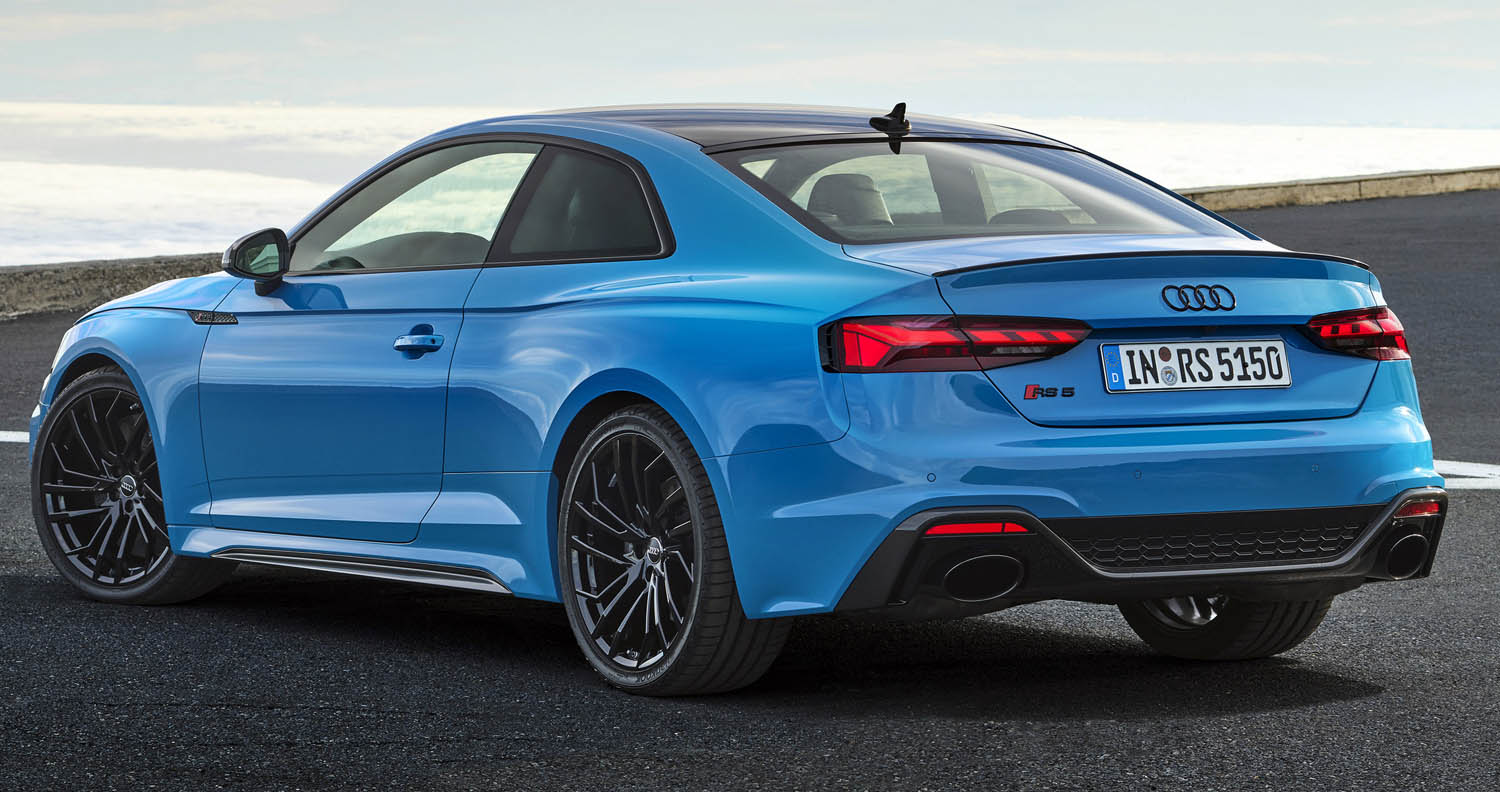
The silhouette of the revised Audi RS5 Coupé and RS5 Sportback continues to fascinate with its classic coupé-like proportions. The wave-shaped shoulder line gives the sides a flowing contour. The wheel arches have been widened by 15 mm (0.6 in) on each side compared to the predecessor model. They are reminiscent of the original Audi quattro and let the RS5 sit comfortably on the road. The new side sill trims support the high-performance presence and ensure that the RS5 appears visually even lower down.
At the rear, a spoiler lip breaks up the air flow in a precisely defined manner. The two large, oval tailpipes of the typical RS exhaust system, similar to the RS6 and RS7, are surrounded by a new, striking diffuser insert. For an improved sound experience, an RS sport exhaust system with black tailpipes is available on request. Customers can optimize their RS5 individually with the three styling packages: Gloss black, aluminum matt, and carbon. These place accents on:
- The exterior mirror housings
- The front blade
- The vertical struts in the air inlets
- The trim strips in the side sills
- The spoiler lip
- The diffuser bracket
- The Audi rings and RS logos
The color palette comprises ten colors, including the two new colors turbo blue and tango red. The Audi exclusive range offers numerous other customization options.
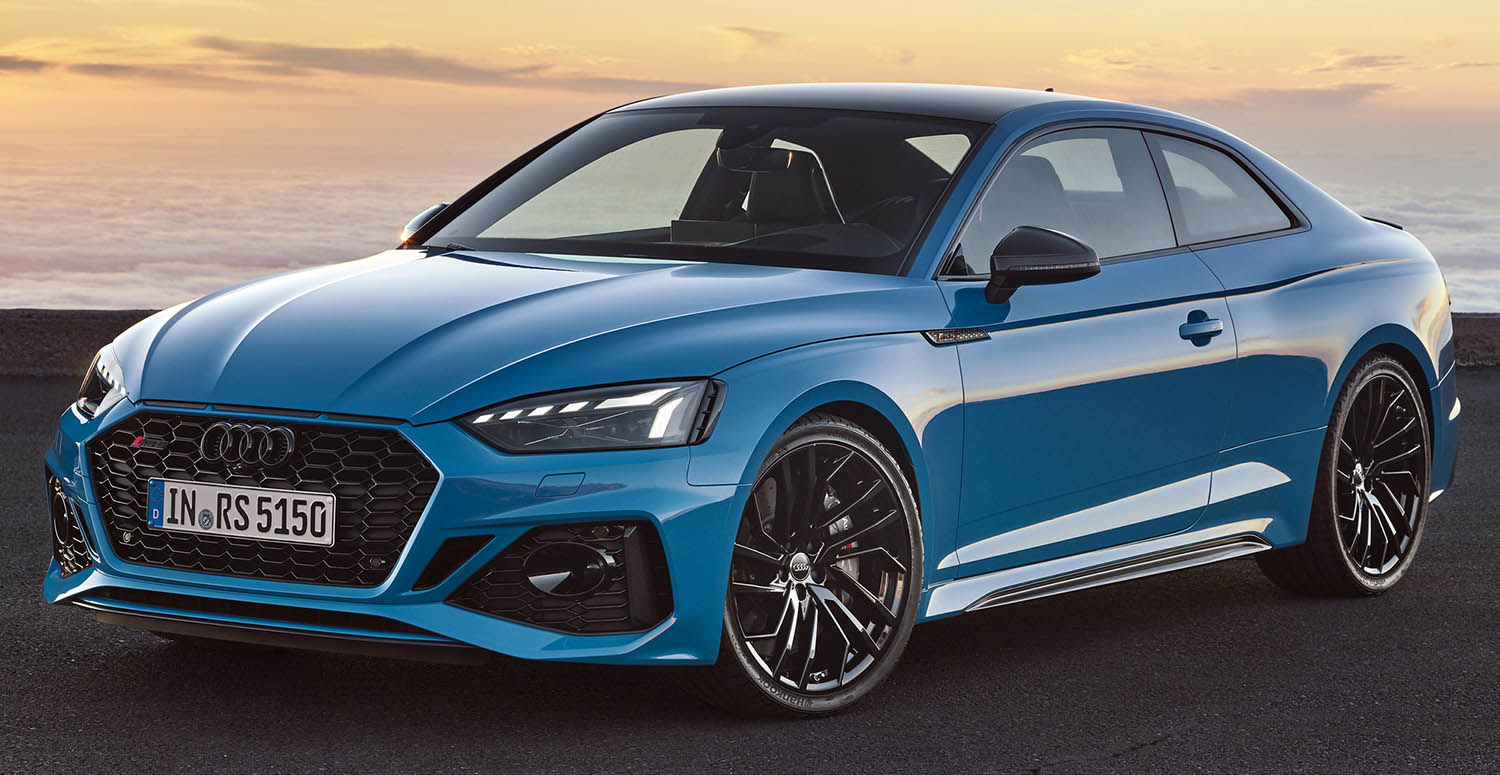
CFRP roof on request: the body
Without the driver, the Audi RS5 Coupé weighs just 1,707 kg (3,763.3 lb); the Audi RS5 Sportback weighs 1,742 kg (3,840.5 lb). In particular, this is because of the compact V6 twin-turbo engine and the high proportion of hot-formed and thus especially lighter-weight steel components in the passenger cell. For the coupé, a carbon fiber-reinforced polymer (CFRP) roof with a visible fiber structure is available. It reduces the vehicle weight by approximately 3 kg (6.6 lb) – at the highest area of the car where it predominantly benefits the focal point.
The external dimensions have remained practically unchanged in the revision. The two-door coupé is 4.72 m (15.5 ft) long, 1.87 m (6.1 ft) wide, and 1.37 m (4.5 ft) high. The four-door Sportback is somewhat longer (4.78 m (15.7 ft)) and higher (1.40 m (4.6 ft)). The luggage compartment has a base size of 410 l (14.5 cu ft) in the coupé; the Audi RS5 Sportback even has 465 l (16.4 cu ft).
Interior and operating concept
The interior of the RS5 models is characterized by horizontal lines and subtly drawn surfaces, which convey a generous feeling of spaciousness. On request, the panoramic glass sunroof allows more light to enter the interior. The interior is kept in black and rock gray as standard. The footrests and pedals are manufactured out of stainless steel; the inlays are made of aluminum race. Anthracite colored aluminum, high-gloss carbon, or – as a new alternative – matt carbon are optionally available. With the two RS design packages, the interior can be designed individually with red or gray contrasting stitching.
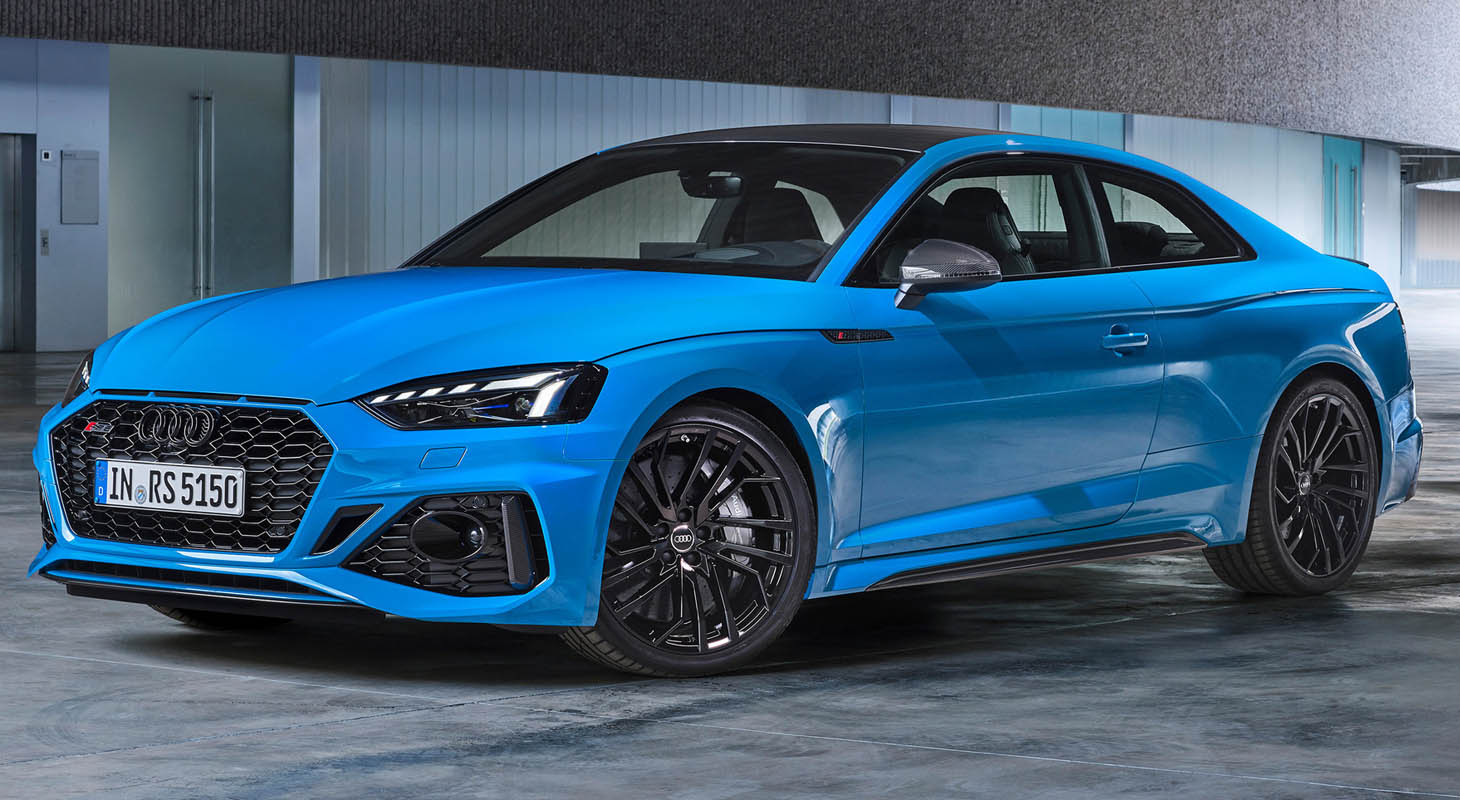
RS design package in gray or red:
- Steering wheel in Alcantara with contrasting stitching
- Selector lever in Alcantara with contrasting stitching
- Knee pads in Alcantara
- Center console with contrasting stitching
- Armrests on the doors with contrasting stitching
- Floor mats with contrasting stitching
- Front belts and flanks of the seat backrests with contrasting stitching, only for RS design package in red
The front RS sport seats can be adjusted electrically and pneumatically in various ways with their high bolsters and thus provide optimum stability. Their center sections have a rhombus pattern; the armrests have the embossed RS logo. The series covers have a combination of leather and Alcantara; fine Nappa leather with a honeycomb pattern is available on request. Instead of RS sport seats, Audi also installs S sport seats, including ventilation.
The flattened RS multifunction sport leather steering wheel is standard as are the illuminated door sill trims with RS5 logos. LED light guides follow the large contours of the interior in the optional contour/ambient light package in 30 colors.
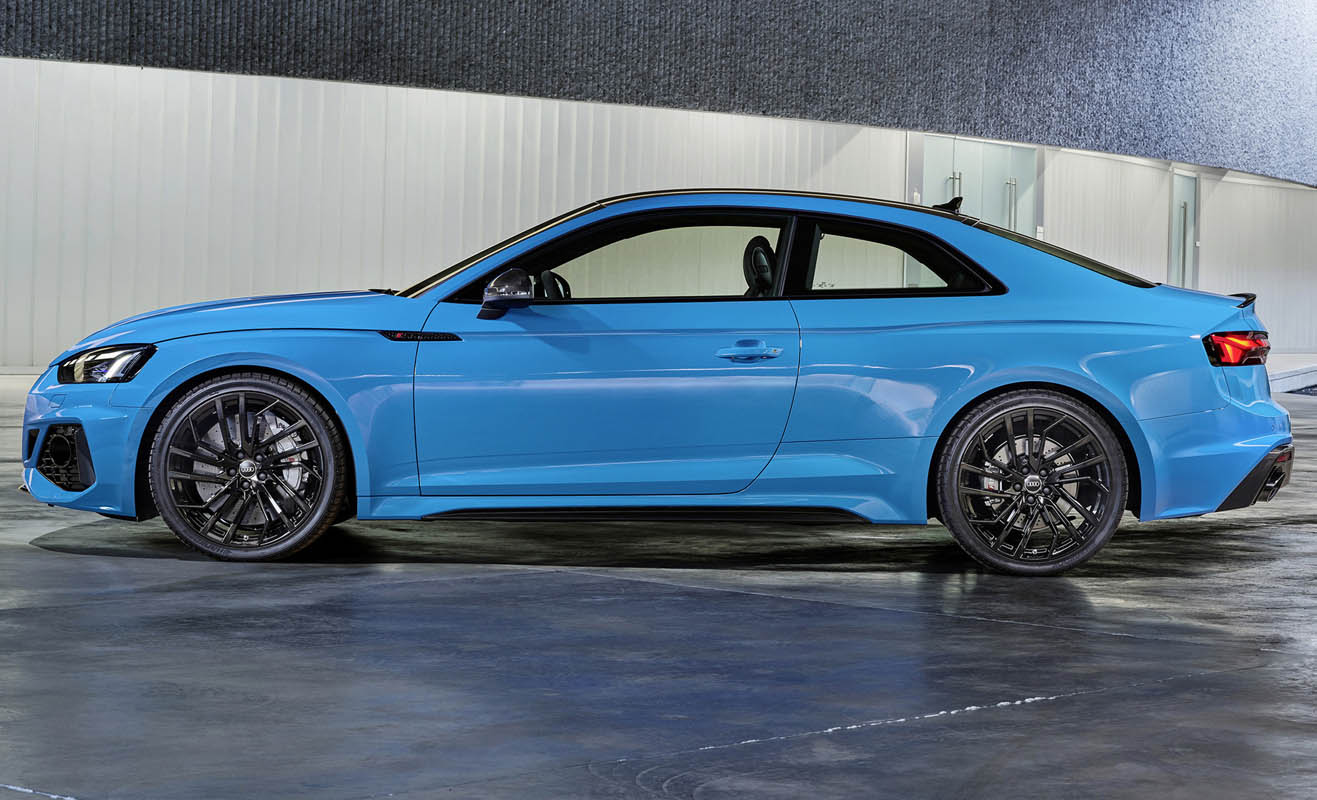
The MMI touch display Center of operation
The future-oriented interior design harmonizes with the new operating concept, which focuses on the MMI touch display with a 10.1-inch screen. The large touch display stands freely in the space, is tilted slightly toward the driver, and is equipped with acoustic feedback. Its menu structure is flat like a smartphone and is organized intuitively so that the desired function can be achieved with few operation steps. The MMI search is based on free text input and returns relevant hits very rapidly. Alternatively, natural-language voice control processes many formulations from everyday speech.
While driving, the central touchscreen provides information about the temperature status of drive components, the maximum longitudinal and lateral acceleration values, as well as about tire pressure and temperature via the “RS monitor” view.
Similarly, the optional Audi virtual cockpit plus with 12.3-inch screen and full HD resolution of 1,920 x 720 pixels reflects the dynamism of the revised RS5 models. Via the multifunction steering wheel, the driver can switch between several views and call up further RS-specific displays, such as the current status of tire pressure, torque, output, engine oil temperature, boost pressure, and g-forces. Moreover, acceleration and lap times can be measured. The flat-bottomed, fully perforated RS sport leather steering wheel with new large aluminum shift paddles also features the “RS MODE” button, which the driver can use also to select the new Audi drive select “RS1” and “RS2” modes. This automatically opens the RS-specific displays in the Audi virtual cockpit. As a third display level, a head-up display is available on request; this projects important information – including typical RS displays, such as the shift light representation – onto the windshield.
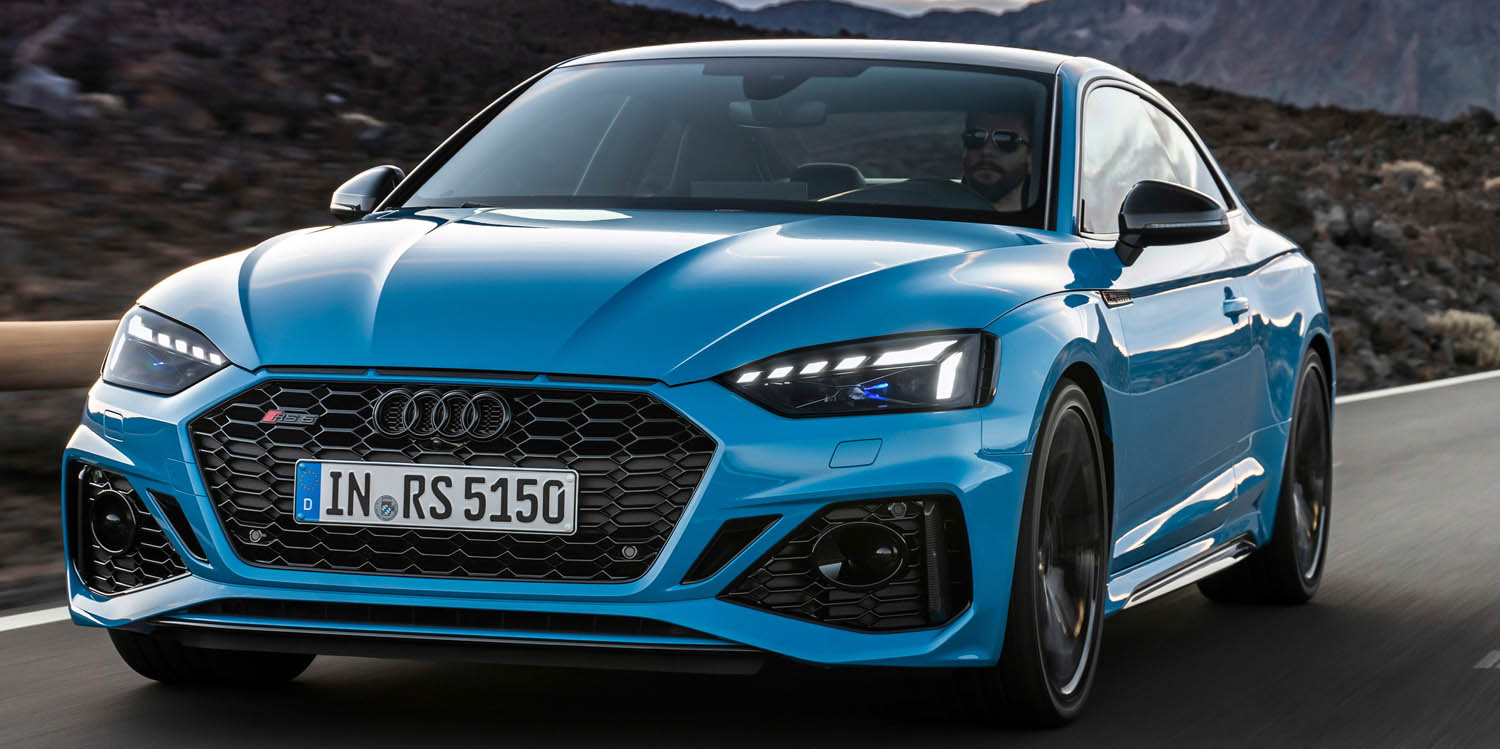
Drive
The strong heart of the revised RS5 models is the 2.9 TFSI. The performance of the V6 twin-turbo remains unchanged; it puts out 331 kW (450 PS) in the wide range of 1,900 to 5,000 rpm and deliveRS600 Nm (442.5 lb-ft) of torque to the crankshaft. It thus accelerates both models from a standstill to 100 km/h (62.1 mph) in 3.9 seconds. The top speed of 250 km/h (155.3 mph) is just a formality; Audi can increase it to 280 km/h (174.0 mph) on request. However, in the WLTP cycle, the 2.9 TFSI consumes just 9.1 l (2.4 US gal) of fuel in the Coupé and 9.2 l (2.4 US gal) in the Sportback over 100 km (62.1 mi) – a CO2 equivalent of 208 g/km (334.7 g/mi) or 209 g/km (336.4 g/mi).
Typically Audi: Inner exhaust side
Each of the two turbochargers on the 2.9 TFSI is assigned to a cylinder bank and can build up a maximum of 1.5 bar of charge pressure (relative). The chargers sit in the 90-degree angle of the cylinder banks; the exhaust side of the engine is therefore on the inside and the intake side is on the outside. This layout enables compact construction and short gas flow paths with minimal flow losses – the engine responds extremely spontaneously to movement of the accelerator pedal.
Efficiency technology: the B-cycle procedure
An important factor for the efficiency of the strong six-cylinder engine is the TFSI combustion process with the B-cycle designation, which is designed specially for the partial load range. Essentially, the procedure is comparable with what is known as the Miller cycle. However, in the classic Miller cycle, the reduced cylinder charge is disadvantageous to torque and power output. Audi has neutralized these effects by implementing turbocharging and the two-stage Audi valvelift system (AVS). The core characteristic of the combustion process is an unusually short opening time during intake in partial-load. The intake valves of the V6 TFSI already close at a crank angle of 130 degrees – well before the pistons reach bottom dead center (BDC). This and increased pressure in the induction manifold reduce throttle losses. The amount of inducted fresh air remains relatively small; accordingly, the compression phase begins later when the piston travels upward after the BDC point. This allows a high geometric compression ratio; the combustion takes place in a relatively small combustion volume. Compared to the short compression phase, the expansion phase is lengthened significantly. The result is greater engine work output at the same fuel consumption, which significantly boosts efficiency. At higher load and engine speeds, the AVS of the V6 TFSI closes the intake valves later – the opening time is increased to 200 degrees crank angle in the 2.9 TFSI. Simultaneously, valve lift increases from 6.0 to 10 millimeters (from 0.2 to 0.4 in). The cylinder charge also increases considerably – the engine revs up powerfully and delivers an impressive output.
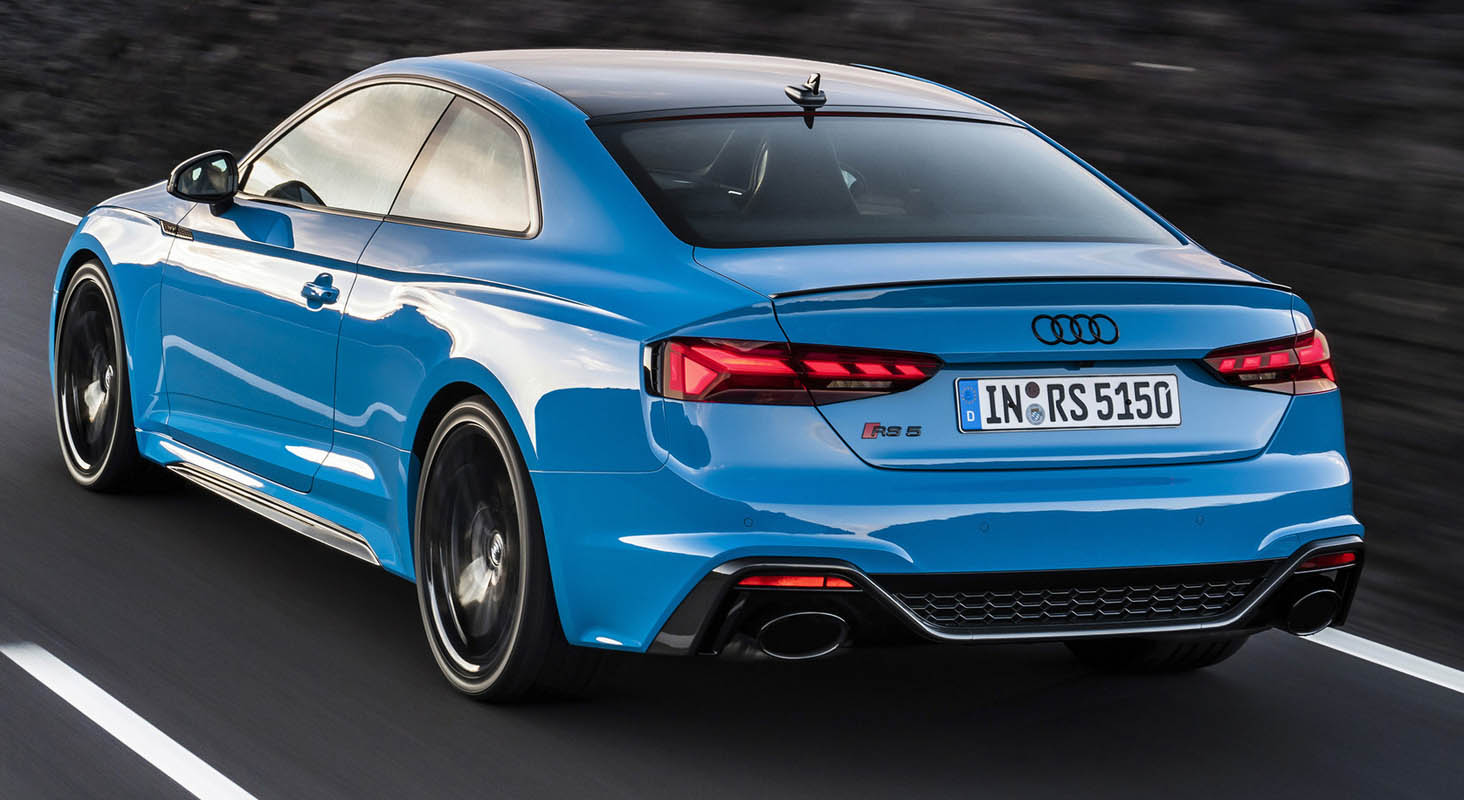
Separate circuits: the thermal management system
A further efficiency component of the 2.9 TFSI is the thermal management system. The crankcase and the cylinder head have separate coolant circuits with controls that are independent of each other. Both circuits are closed after the cold start. This leads to a quick warm-up of the cylinder head and crankcase. The exhaust manifolds that are integrated into the cylinder head are rinsed with coolant. When the engine is warm, this technology lowers the exhaust temperature – consumption drops, especially when driving in a sporty way. The great efficiency of the V6 twin-turbo is also partly to do with low friction. For example, the fully adjustable oil pump only builds up as much pressure as necessary.
The chain drive uses a new concept to reduce the drive power required: The crankshaft drives the balancer shaft via gears, with the shaft lying far down in the V of the cylinder banks. From here, chains run to the four camshaft sprockets. These are trioval in shape, i.e. they have a slightly triangular shape, in order to compensate for peak forces. The balancer shaft rotates on roller bearings with particularly low levels of friction.
Implacable traction: the transmission
The V6 twin-turbo sends its torques to a spontaneously and quickly shifting eight-speed tiptronic. Drivers can choose between the D and S modes or shift gears manually using the enlarged aluminum shift paddles on the steering wheel. The dynamic starting function controls starts with optimum traction and maximum acceleration.
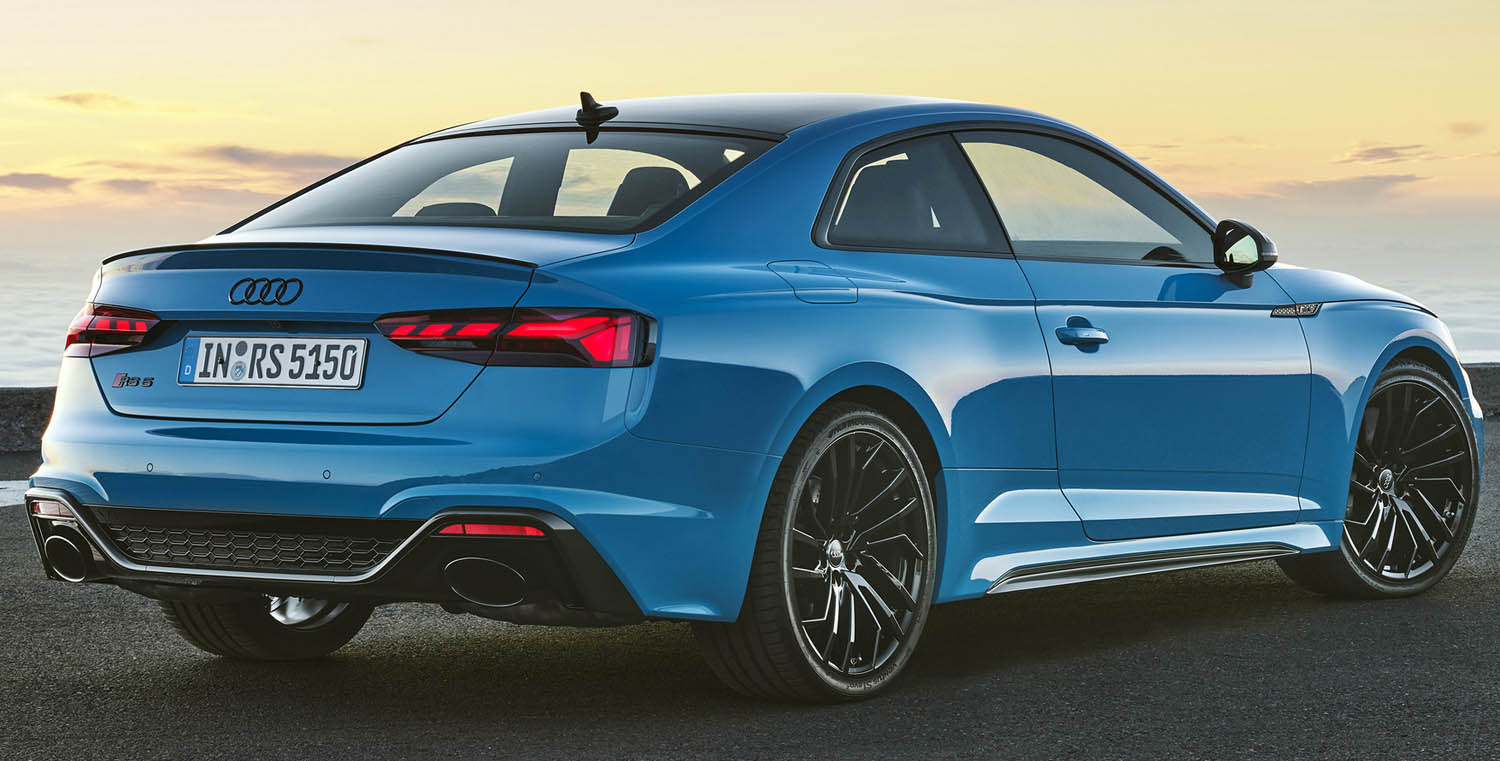
Consistent traction, unshakable stability, and high dynamic handling under all conditions – 40 years ago, Audi put the legendary original quattro onto the road and thus started the major success story of permanent all-wheel drive. Like all Audi RS models, the revised RS5 Coupé and Sportback have the quattro drive train on board as standard. In normal driving operation, its center differential distributes forces slightly more toward the rear – 40% end up on the front axle and 60% on the rear axle. If slip occurs at one axle, most of the torque is rapidly redirected to the other axle – up to 70% to the front or up to 85% to the rear axle.
The wheel-selective torque control, a function of the Electronic Stabilization control (ESC), perfects the work of the quattro drive. When cornering fast, it applies precisely calculated brake interventions at the wheels on the inside of the curve before they begin to spin. The difference in propulsive forces causes the car to turn very easily into the curve, for the benefit of agility, precision, and stability.
Even more dynamism and neutrality are provided by the sport differential, which is tuned specifically for the RS. When driving in a sporty way, it distributes the torques actively between the rear wheels; for this purpose, it uses two superposition gears, which are activated via the multi-plate clutches. When steering or accelerating, it pushes it primarily onto the wheel on the outside of the curve; as a result, it positively pushes the car into the curve. The sport differential is just as effective in overrun mode as it is under load. It is controlled electronically within a few hundredths of a second. Based on the steering angle, yaw angle, lateral acceleration, speed, and other information, the control unit rapidly and repeatedly calculates the ideal distribution of the forces for each driving situation.
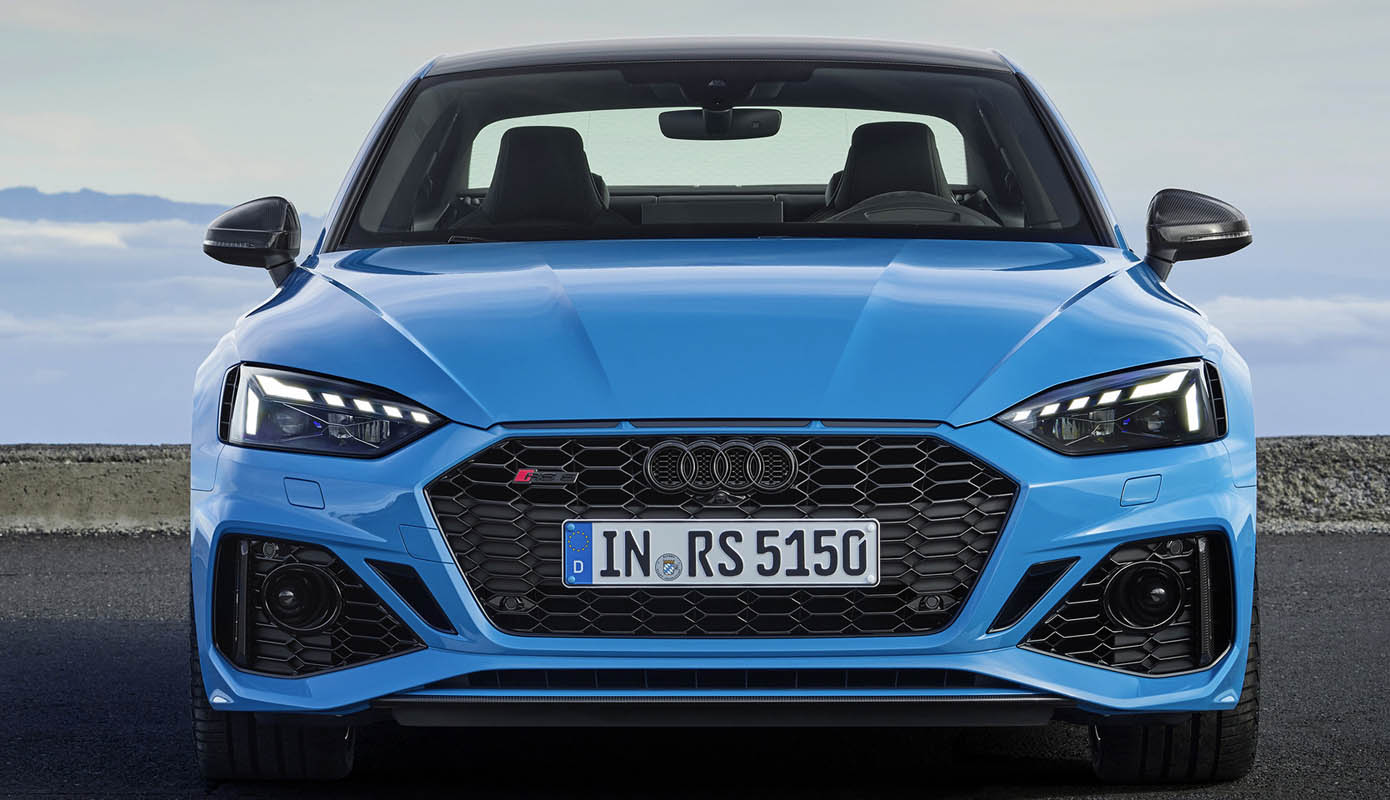
Suspension
The axle principle of the RS5 enables optimum absorption of longitudinal and transverse forces. A five-link design, which consists mostly of aluminum, is used for the front and rear axle. This is particularly advantageous with regard to sporty driving characteristics and agility but does not cause any comfort disadvantages. The track for both models is 1,598 mm (62.9 in) at the front and 1,588 mm (62.5 in) at the rear.
The standard RS sport suspension of the revised RS5 models already guarantees a high level of dynamism. The dampers are tuned specifically for the RS and are approximately 15% more taut than in the Audi S5. On request, Audi installs the RS sport suspension plus with the integrated pitch and roll compensation Dynamic Ride Control (DRC). It binds the RS5 even more tightly to the road and ensures constantly agile handling, especially during dynamic cornering. Dynamic Ride Control consists of steel springs and three-way adjustable dampers that counteract the movements of the vehicle body with no delay, without the use of electronics. When the vehicle is turning into and traveling around a bend, the damper response is altered so that the vehicle’s movements around the longitudinal axis (roll) and around the transverse axis (pitch) are significantly reduced. The dampers are each connected diagonally to a central valve via two separate oil lines. The valves provide the necessary compensating volume via internal pistons with the gas-filled compartment behind them. When the vehicle is steering into and traveling around a bend, an oil flow is generated between the diagonally opposite dampers via the central valve, thereby creating additional damping force. When one side is cushioned, the damping characteristics are altered such that roll and pitch movements are eliminated almost entirely. As a result, this highly responsive damper system ensures that the RS5 is particularly precise when negotiating curves.
The driver can set the function of the dampers via the standard Audi drive select dynamic handling system in three stages. Its highly precise control occurs via the electronic chassis platform (ECP) as a central control mechanism. The ECP adjusts the shock absorbers according to road conditions, the individual driving style, and the mode chosen in drive select.
“RS MODE”: a button for dynamic handling
With the Audi drive select dynamic handling system, the driver can set the characteristics of both steering variants as well as other aspects of the RS5. The Audi drive select system influences the engine and transmission management, the power steering, the suspension, the quattro sport differential, the engine sound, and the way in which the automatic air conditioning works.
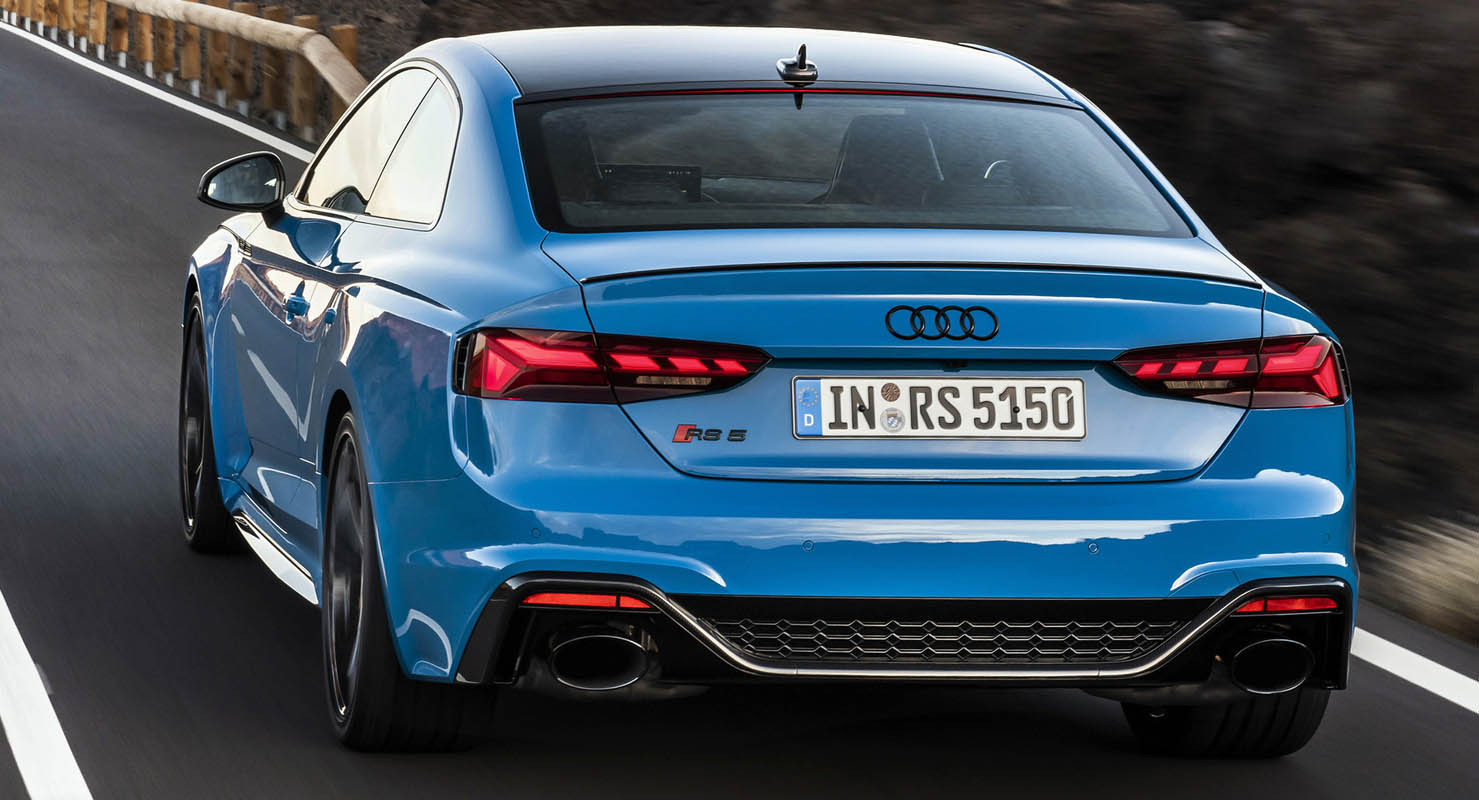
There are five profiles available: Comfort, auto, dynamic, as well as two new individually customizable RS-specific “RS1” and “RS2” modes. Once these have been set to suit the driver’s personal preferences and stored in the MMI touch response, they can be enabled directly via quick access to the RS MODE button on the steering wheel. Consequently, the driver can easily switch between the “RS1” and “RS2” modes as well as the last selected drive select mode without having to operate the MMI touch response again.
The ESC stabilization control is tuned specifically for the RS and brings a sport mode with it. If the driver presses the ESP button for more than three seconds, the Electronic Stabilization Control is deactivated completely.
As an alternative to the electromechanical power steering, dynamic steering with RS-specific tuning is available. It varies the steering ratio by practically 100%, depending on the road speed and the Audi drive select setting in which it is integrated. The transitions run continuously and practically imperceptibly.
The central part of the dynamic steering is a superimposition gearing in the steering column, which is driven by an electric motor. The so-called strain wave gearing was originally developed for robotics and aerospace. It is compact, light, and torsionally rigid and acts free of play, with precision, and with low friction. The gearing can transmit tremendous torques extremely rapidly and achieves a high level of efficiency.
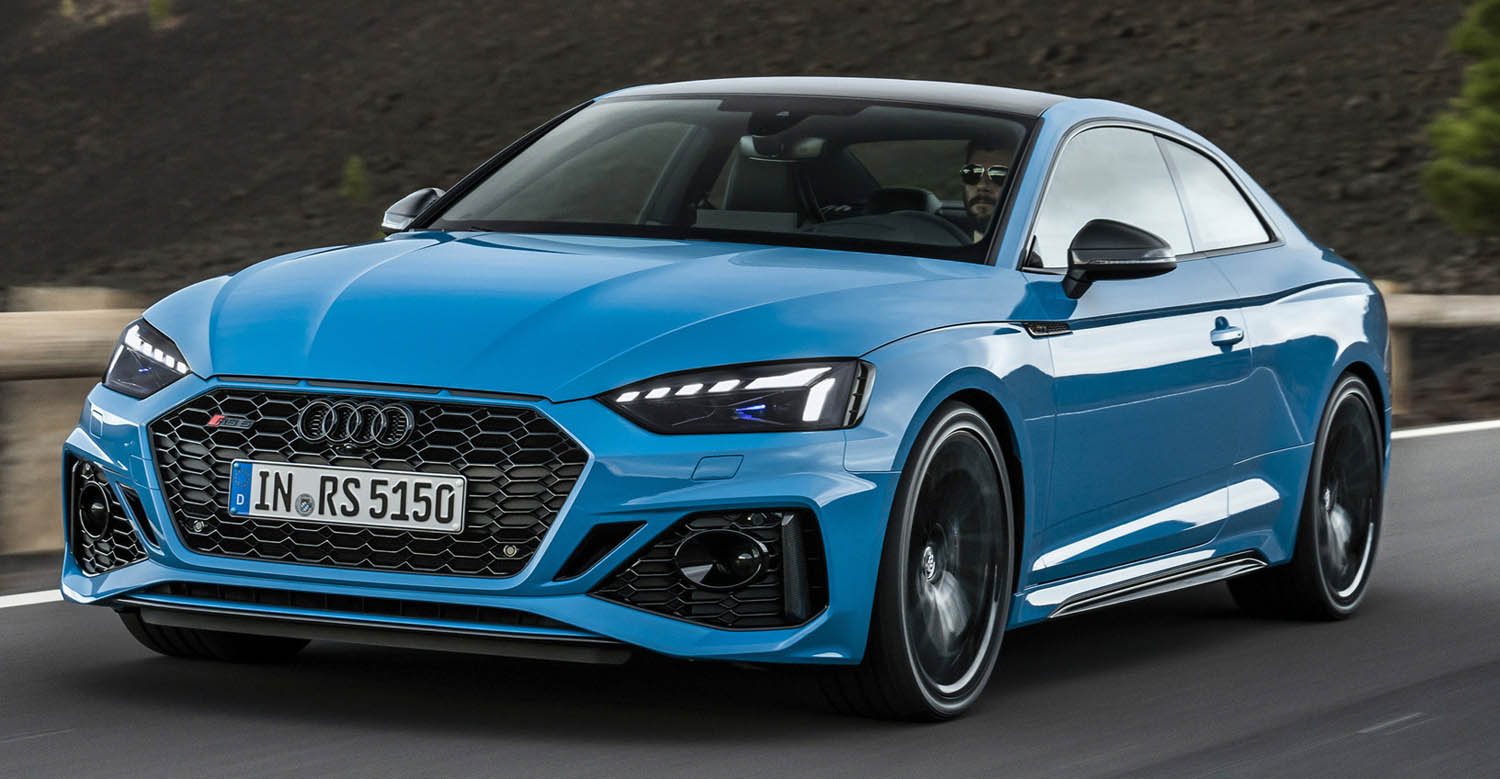
At low driving speeds in city traffic and in maneuvering, the dynamic steering operates very directly; all it takes is two full turns of the steering wheel to travel from end stop to end stop. The power steering boost is also high, making parking maneuvers very easy. On country roads, the directness of the steering response and steering power assist are reduced progressively. At fast expressway speeds, indirect gear ratios and low power assist are used to smooth out unsteady steering movements to enable impressive straight tracking.
When driving in a particularly sporty way, the dynamic steering works closely together with the electronic stabilization control (ESC). This uses a superposition gear to vary its ratio by up to 100 percent, depending on the car’s speed and the mode selected in the Audi drive select dynamic handling system. If necessary, it counter-steers slightly; its slight corrections, most of which are unnoticeable to the driver, reduce understeer and oversteer due to load alterations in the vast majority of situations. When braking on road surfaces with different friction coefficients, the system helps by means of stabilizing steering corrections. In dynamic drive select mode, the steering is consciously tuned in a linear manner for the best possible feedback of the road surface and driving behavior. The RS5 thereby gains stability, dynamism, and driving safety.
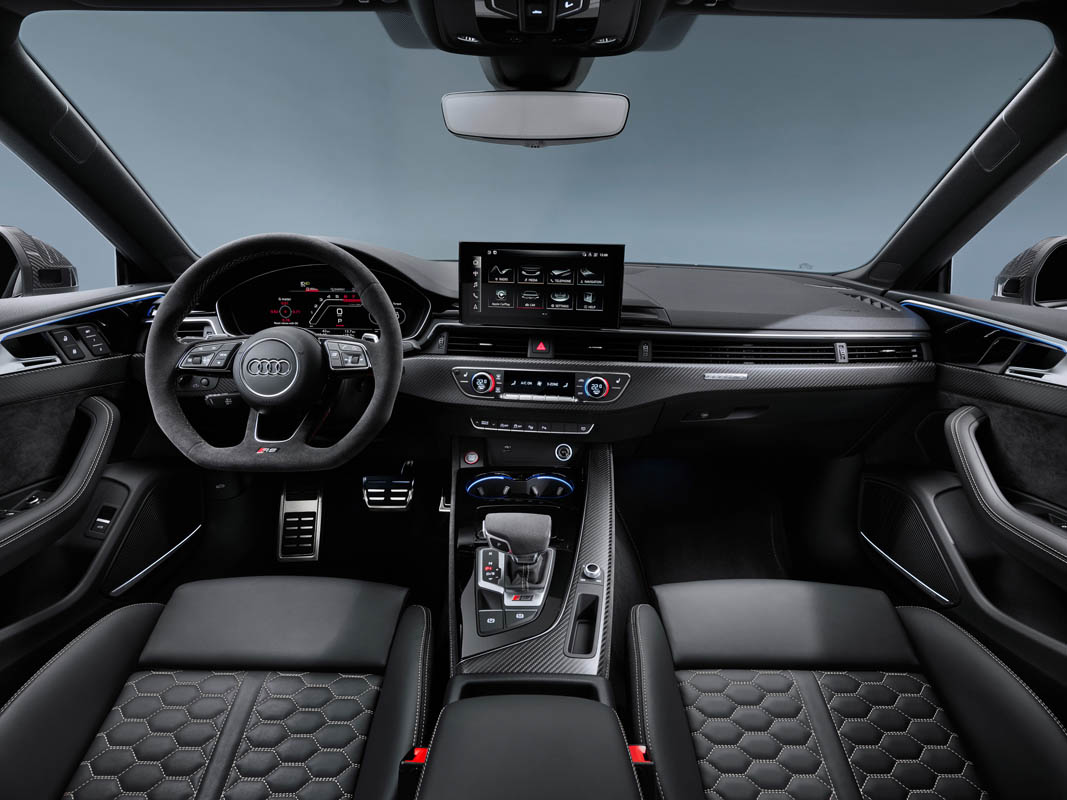
RS dynamic package:
- RS sport suspension plus with Dynamic Ride Control (DRC)
- Top speed increased to 280 km/h (174.0 mph)
- Dynamic steering with RS-specific tuning
- quattro sport differential
- Matrix LED headlights with Audi laser light, dynamic light sequencing, and dynamic turn signal
Big and strong: Wheels and brakes
The revised RS5 models drive on 19-inch forged lightweight wheels with series 265/35 tires as standard. The 20-Inch wheels with various designs, including, for the first time, a bronze colored or completely black wheel are available on request. Behind the large wheels, there are strong brakes with perforated composite discs – its covers are made of aluminum and its friction rings are made of steel. At the front axle, these have a diameter of 375 millimeters (14.8 in), while at the rear, they measure 330 millimeters (13.0 in). The six-piston brake calipers with RS logo are painted in black as standard; they can optionally be painted in red.
On request, Audi can install perforated discs on the front axle with a diameter of 400 mm (15.7 in), which are fabricated out of particularly light and abrasion-resistant carbon-fiber ceramic discs. They reduce the total weight of the RS5 by around 6.5 kg (14.3 lb) and are gripped by gray, red, or blue six-piston calipers. Air ducts that are installed on the underbody ensure optimum cooling of both front brakes.
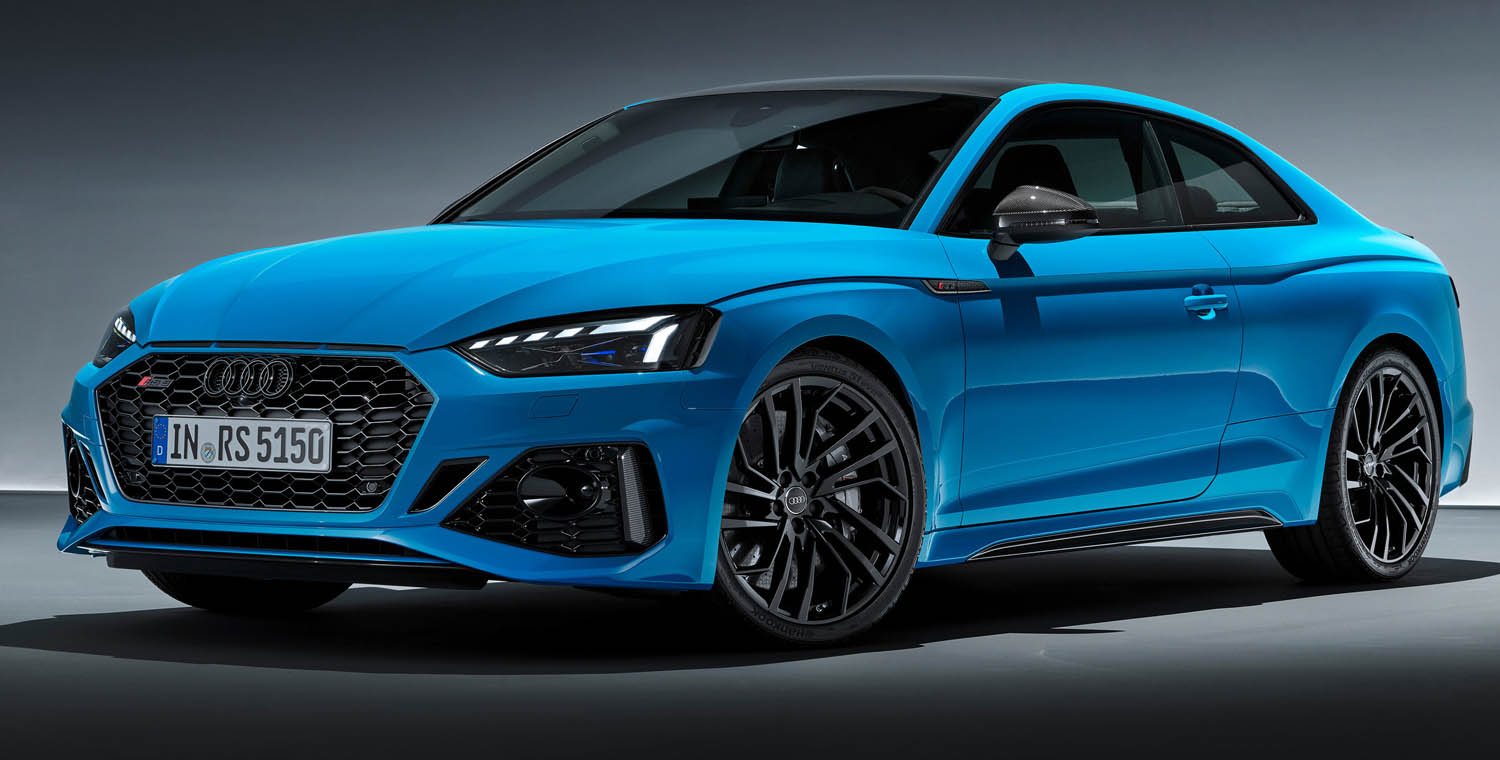
Equipment
From operation to connectivity to driver assist systems: No matter how you look at it, the revised Audi RS5 is a highly connected vehicle. Its MMI operating system offers a user experience similar to a contemporary smartphone and systematically advances the digitalization of the cockpit. Instead of the rotary pushbutton on the center tunnel console, operation is now via a large touchscreen display with acoustic feedback. It is mounted in the center of the instrument panel and tilted slightly toward the driver. It has a diagonal of 10.1 inches and a resolution of 1,540 x 720 pixels.
The optional three-zone deluxe automatic air conditioning can be controlled via the large display with capacitive buttons; a separate control panel is available for rear seat passengers. There is a 7-inch color display in the cockpit as standard. The fully-digital Audi virtual cockpit plus with a 12.3-inch diagonal and a full HD resolution of 1,920 x 720 pixels is the top level available. Apart from the classic view with dial instruments, the RS-specific displays with output and torque display, g-forces, and tire pressure monitoring system also open automatically when the two new RS modes are selected via the steering wheel button.

With the optional top infotainment system MMI Navigation plus, the car learns based on the routes driven and can thus intelligently suggest routes to the driver. The calculation occurs online on servers operated by the service provider HERE; to do this, they process real-time information for the overall traffic situation. If the mobile connection is not strong enough, the navigation switches smoothly to the on-board routing, which runs in parallel. The map, which integrates the 3D models of many major European cities, is updated every year over the air four times.
Behind the MMI Navigation and the standard MMI Radio plus, there is a new main unit – the third-generation modular infotainment platform (MIB 3). It has 10 times the computing power of its MIB 2 predecessor. Further modules, such as the Audi smartphone interface, Audi phone box, or the Bang & Olufsen Premium Sound System with 3D sound are available for the infotainment hardware.
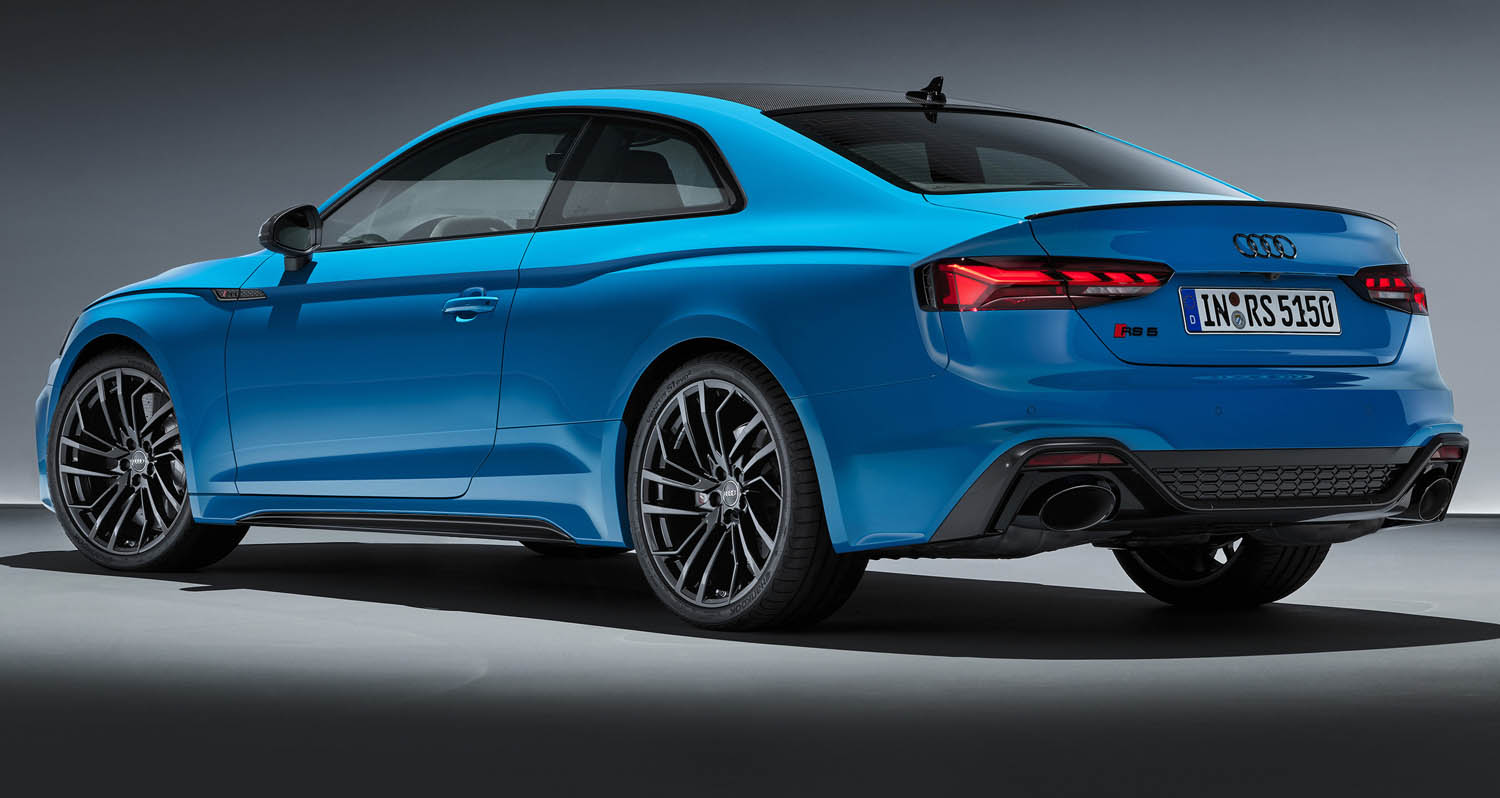
The online services of Audi connect
Audi connect stands for online connection between the driver, the car, and the infrastructure. It bundles all applications that use online connections with the car in order to provide real-time information and a diverse range of services. Therefore, Audi connect not only makes things easier for the driver and supports the driver with anticipatory driving, it also allows the driver to keep updated while driving without having to look away from the road. The online services of Audi connect are free of charge for three years and are on board on the RS5 along with the MMI Navigation plus.
- Hybrid radio: Switches between analog radio, DAB+, and online radio for the best possible quality and global station reception (additional data package via Cubic required)
- Online route calculation in real time: Shows information on traffic signs and hazards and warns the driver about speed limits, accidents, or black ice, for example
- On-street parking: Shows free street parking spaces at the destination on the MMI display
- Navigation with Google Maps
- Wi-Fi hotspot in the car: Linking of up to eight mobile devices possible; data packages can be booked comfortably via the MMI
- Weather information up to seven days in advance
- Online news: Current news can be displayed and read out directly in the car
- Online speech entry: Improvement of the rate of recognition and quality of the results
- Personal profile: Allows preferred settings to be saved for up to seven users (e.g. favorite radio station, seat adjustment, interior lighting, and head-up display)
The Audi connect emergency call & service is installed as standard. These ensure a secure feeling for every journey – whatever happens and wherever you are going. For example, in the event of a serious accident, an automatic emergency call is sent to the Audi emergency call center.
Likewise, the services of Audi connect remote & control are available as standard. These network the vehicle with the smartphone. To do this, the customer just needs the free myAudi app. With this app, the customer can then comfortably access various information concerning the car from home. For example:

- Fuel tank and oil level, kilometer reading, range, next due inspection, and whether all windows and doors are closed
- Remote locking and unlocking
- Switching auxiliary heating on and off
- Localizing parking position
- On-street parking: Shows free parking spaces at the destination on the MMI display
- Navigation with Google Maps
- Wi-Fi hotspot in the car: Linking of up to eight mobile devices possible; data packages can be booked comfortably via the MMI
- Weather information up to seven days in advance
- Online news: Current news can be displayed and read out directly in the car
- Online speech entry: Improvement of the rate of recognition and quality of the results
- Personal profile: Allows up to 400 preferred settings to be saved for up to seven users (e.g. favorite radio station, seat adjustment, temperature setting, interior lighting, and head-up display)
- Management and assignment of digital Audi connect key
With the optional Audi connect key, the customer can lock and unlock the RS5 via an Android smartphone with secure element and Near Field Communication functionality and start the engine. To unlock the car, the driver holds his or her smartphone close to the handle of the driver’s door; to start the engine, he or she puts it in the Audi phone box. The Audi connect key can be used at any time even if the smartphone battery has run out.
The owner can use it to pass on up to four keys to family members, friends, or colleagues. The car recognizes the key owner when it is unlocked, and it loads a wide variety of settings from the user’s individual profile – ranging from seat position to air conditioning and navigation settings.
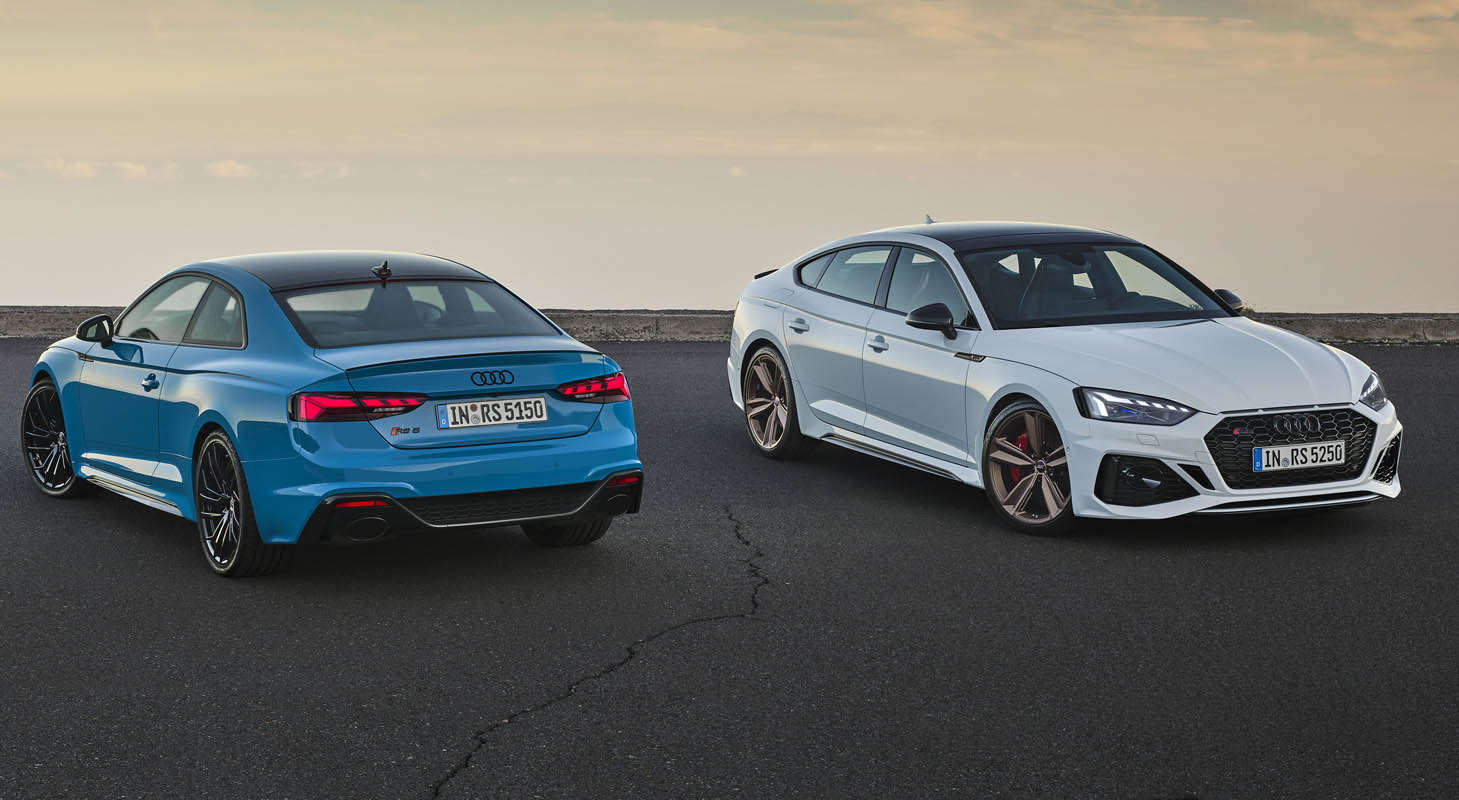
Even greater self-assurance: the driver assist systems
More than 30 driver assist systems are available for the RS5 models. The parking system plus, cruise control, traffic sign recognition, and Audi side assist are available as standard. The optional systems have been bundled into the “Drive” and “Park” packages. The “drive” assist package already includes adaptive cruise control with “stop and go” and Audi pre sense rear, including pre sense basic. The lane keeping assist and lane change warning are part of the optional package.
The predictive efficiency assist can brake and accelerate the RS5 predictively by analyzing navigation data, such as junctions and roundabouts, in addition to traffic signs. The assist package “park” includes parking system plus, the reversing camera, and the parking brake. In addition, it is possible to add further assist systems via an upgrade, for example the surround view cameras and the park assist.
25 years of RS: Exclusive anniversary package
Right at the start, Audi Sport GmbH offers an anniversary package for the revised RS5 models. The “anniversary package 25 years of RS” pays homage to the first Audi RS model, the RS 2 from 1994. The body is painted in the Nogaro blue of the Audi icon; alternatively, it can also be painted in mythos black, Nardo gray, and glacier white. The add-on parts are kept in a matt aluminum look and gloss black; the wheels are also kept in a two-color look. In the interior, the honeycomb pattern of the RS sport seats is illuminated in denim blue; the piping of the floor mats consists of cobalt blue Alcantara.
In Germany and in other European countries, the Audi RS5 Coupé and RS5 Sportback will be available at dealerships starting in spring 2020. The base price for both models is EUR 83,500 in Germany.
